














This is the time of year when the professional smart home integration business comes together for its annual convention, CEDIA Expo, to catch up on all that’s new and exciting in residential tech. So much has changed over the years, but the product trends and developments on display promise to be just as inspiring as they ever have been for those of us working in this channel.
I’ve been covering the integrated home tech market long enough to remember the early years when home theater and plasma TVs were the buzz of the show. Then, seemingly overnight, TV tech became a commodity item at Costco and the launch of Apple’s iPod and iPad changed how control systems and even multiroom audio needed to be considered in the home.
There were a couple of lean years when I felt that all of the joy had been drained from our industry as everything at CEDIA Expo seemed like a behind-the-scenes black box problem solver or network switch, with nary a big movie screen or dazzling surround sound demo to be found.
Soon, however, the masters of video technology (Samsung, Sony, LG, etc.) were back at the show to reconnect with the professional integration channel as “HD” turned to “4K,” and new LED and OLED flat panels required new technical expertise and client care. Even audio tech received a shot in the arm, as a world once fixated on Beats headphones, earbuds, and the convenience of compressed music, started to realize the pleasure that could be found in hi-res audio and the analog warmth of vinyl records, not to mention a more decorator-centric approach to how loudspeakers could blend into the ceiling to match tiny designer lighting fixtures that were being installed more often in high-end residences.
And, now, with the opportunity to sell lighting systems and fixtures — not just the dimmers, control systems, and motorized shades — custom integrators are faced with a whole new exciting category ripe for expansion. Motorized shades have been a booming business for many years, adding another opportunity for professional consultation on aesthetic features (shade fabrics, fascia and end cap designs and colors) that were once the exclusive domain of interior designers, but now professional integrators can develop an even broader ecosystem of skills, working more closely with electronical contractor partners, architects, and builders, even earlier in the construction process. And everyone needs lighting in their home and likely does not understand why builder-grade lighting can be so lacking, especially in a luxury home.
Add to that the ability to tell the story of human-centric or “circadian” capabilities that tunable lighting can provide the homeowner, and we’re witnessing a whole new way for our industry to shine.
While the CEDIA channel will always face threats and challenges, those who choose to embrace new technology opportunities with confidence and intelligence will always find success, willing business partners, and trusting clients.
As the definition of the smart home evolves, and the needs of homeowners who love the convenience of technology but lack the knowledge or patience that it takes to make it all work remain, there will always be a role for professional integrators who adapt and grow their businesses.

So much has changed over the years, but the product trends and developments on display promise to be just as inspiring as they ever have been for those of us working in this channel.Executive Editor Jeremy Glowacki






Looking for high-quality, in-depth coverage of emerging trends in home automation?
With inspiring innovator profiles, exclusive interviews, new product spotlights, and expert career and educational training, Residential Tech Today is your essential resource for smart home integration.

Subscribe now for exclusive insights into this rapidly growing field with the industry’s most comprehensive residential tech publication.
PUBLISHER/EDITOR-IN-CHIEF
Charles Warner cwarner@goipw.com
CREATIVE DIRECTOR Shane Brisson shane@goipw.com
EXECUTIVE EDITOR
MANAGING EDITORS
CONTRIBUTING EDITOR
CONTRIBUTING WRITERS
SPECIAL THANKS TO:
Melissa Andresko, Carol Campbell, Ashley Collazo, Sarah Cox, Veronica Esbona, Michael Farino, Maureen Jensen, Kimberly Lancaster, Brittany Loeffler, Caleigh McDaniel, Lucette Nicoll, Elizabeth Parks, Jess Passananti, Ron Pence, Peter Schuyler, Art Sesnovich, Micah Sheveloff, Laura Shubel, Payton St. Lawrence, Cat Toomey, Rosimely Ulpino
This publication is dedicated to the dreamers, the innovators, the collaborators, and the doers – who can’t be bothered by those saying it can’t be done. Nicholas and Aria, the future is yours!
CHIEF REVENUE OFFICER
CHIEF FINANCIAL OFFICER
VIDEO/PODCAST PRODUCER
Jeremy Glowacki
jglowacki@goipw.com
Lindsey Feth
Patricia Miller
Michael Heiss
Jay Basen
Amanda Beckner
Henry Clifford
Anthony Elio
Walter Joseph
Richard Laliberty
Anthony Leo
Marta Majstorovic
Lisa Montgomery
Brandon White
Jessica Ferranti
Mary Roche
Alan Tuszynski
DISTRIBUTION CMG
PRINTING
Publication Printers
Residential Tech Today is part of the PrintReleaf program helping to sustain and grow our global forestry system.
Advertising inquiries, please contact Jessica Ferranti, email jferranti@goipw.com or call 720-608-6898.



The only Smart Vent & wireless thermostat for independent room-by-room temperature control.

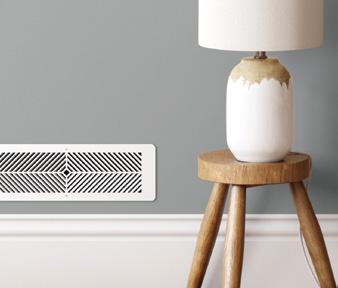
Integrate HVAC systems and smart homes into a single platform.


Find out more at flair.co/residentialtechtoday
Flair’s solutions integrate with hundreds of smart thermostats, mini splits, and voice assistants.

Jay Basen is retired from his 40-year career in professional software development, but he still keeps his tech skills sharp with special projects and product reviews. During his time in the industry, the Silver Certified Crestron programmer specialized in the design, development, and installation of automation, building management, and energy management systems for residential and commercial buildings. On p. 12, he reports on Flair Smart Vents and on p. 46 he provides an update on the Matter smart home protocol.

Amanda Beckner is vice president of education and training at CEDIA and also a board member for the Women in Consumer Technology group. She began her tenure with CEDIA two years ago after serving 20 years in educational leadership roles with AVIXA, the association that runs the InfoComm trade show. On p. 18 Beckner provides educational session planning guidance for CEDIA Expo 2023 attendees.

Henry Clifford founded Richmond, VA-based Livewire in 2001 to meet the growing demand for technologically integrated homes and businesses. In 2018, he co-founded Parasol, a remote service support company, and has served on the CEDIA Board of Directors. His most recent venture was the recent launch of IntegrateU, a professional on-boarding service for the custom integration industry. On p. 56, he reviews the Control4 Halo Touch remote.

Michael Heiss is a former product and marketing executive at Harman International, who was responsible for many breakthrough audio and video products. He also was a promotion manager at NBC and was key to the development of hotel in-room movies and created the first nationwide movie rental service for Beta and VHS cassettes. Heiss served two terms on the CEDIA Board and led their Technology Council. He is also a CEDIA Fellow, recipient of CEDIA’s Lifetime Achievement Award, a member of the TV Academy, the Society of Broadcast Engineers, and is a Life Member of both IEEE and SMPTE. On p. 20 he shares the latest on Amazon’s Echo line, on p. 22 he reports on the Roku TV rollout, and on p. 34, he provides an update on NEXTGEN TV.
Richard Laliberty has served as product marketing manager for shading and residential controls at Legrand North America for the past two and half years. Prior to his current position he served in technical support roles for the company after beginning his career in the service department of QMotion Advanced Shading Systems. On p. 36, he shares dealer insights into selling motorized window shades.


Brandon White is director of new product development at Vanco, where he leads the design, engineering, and development of the company’s four brands: Vanco, Evolution, Pulse Audio, and Beale Street Audio. Since joining the company in 2015, he has worked with the team to develop nearly 100 products and led product launches, including Pulse Audio, a line of indoor/outdoor wireless speakers, amplifier and accessories. lines for both residential and commercial markets. On p. 30, he offers his insights into working with USB-C connectors in AV projects.

Extraordinarily
Perfect
Comprehensive detection and reporting with hybrid flexibilitywired, wireless, or both.
ElkConnect®
Advanced app and cloud portal streamlines system configuration, management, and control with powerful tools and a consistent user experience www.elkproducts.com/alarm-engine





Z-Wave integration and a dynamic rules engine provides easy control and automation of lights, thermostats, locks and more.

Understanding the actual impact of AI — and how to thrive in this new era — is a pressing concern for everyone in the technology business, especially product managers. Airfocus, a company that develops modular product management software, recently released research on the impact of AI on product management, providing insights for navigating this shift.
In the midst of AI hype, the research aims to provide concrete data and practical insights on AI’s role in product management. Based on the input of 130 product professionals from renowned companies such as CAT, SAP, Axel Springer, Orange, M&S, Shopify, GOODYEAR, and The Washington Post, the findings reveal a resounding consensus.
Navigating this shift requires a focused approach. As airfocus founder Malte Scholz highlights, “Establishing the right use cases for AI — along with a strong emphasis on internal training and data security — is essential. Concurrently, nurturing a work culture that places high value on empathy and personal initiative is equally important.” To succeed in this transition, it’s critical to build support from within the team and ensure everyone is on board.
On the customer side, market research firm Parks Associates notes that demand for features such as keyless entry, reduced false alarms, and smarter alerts such as package theft detection is driving manufacturers and OEMS to embed AI and video analytics into products. Residential front door or entryway applications, including video doorbells, smart video door locks, and smart garage doors are leading other sectors in smart camera adoption.
92%
think AI will substantially and permanently reshape the industry, despite various implementation challenges.
Source: airfocus
A solid
43%
Revolutionize market research
68% Idea management
50% Technical specifications
49% and more, suggesting that the benefits of AI adoption strongly outbalance its perceived risks.
Source: airfocus
Participants anticipate a high potential for AI to: report smooth integration of AI into their day-to-day processes.
86%
INTERESTINGLY, only 17%
of respondents see AI as a possible threat to their jobs.
Source: airfocus
of consumers reported at least one AI feature as important to their purchase decision
Source: Parks Associates
26%
said that data concerns could be an impediment to their adoption of AI.
Source: Parks Associates

Ideally, every room in a home will be the same temperature when the central heating or air conditioning system is running. Unfortunately, this is not always the case. During the winter a north-facing room can be much colder than a south-facing room with several windows that let the sun in. Similarly, that same south-facing room will be much warmer in the summer than a north-facing room that is shielded from the sun.
Flair Smart Vents offer an affordable way to fix an airflow imbalance. They also include additional features that take them beyond the role of a simple HVAC problem solver.
Flair’s Smart Vent system consist of Motorized Smart Vents that simply replace the existing floor-, wall-, and ceiling-mounted HVAC registers in a home. The vents also include Flair Pucks that act as both thermostats regulating the operation of the Smart Vents and control points.
If you have rooms that receive too much air from your HVAC system and are either too cold in the summer or too warm in the winter, then you can place Flair Smart Vents in these rooms and they will restrict the air being sent to them to balance the temperature between these rooms and the rest of your home.
Similarly, if you have rooms that are too cold in the winter or too warm in the summer because there isn’t enough airflow to these rooms from your HVAC system, then you can purchase Flair Smart Vents for the other rooms in your home. The Flair Smart Vents will again balance the amount of air being sent to the rooms in your home for even heating and cooling.
In addition, Flair can also provide you with the ability to specify different temperatures in different rooms as if you had a multi-zone HVAC system.
The Flair Comfort Calculator on the company’s website can assist a homeowner in designing a system that fits the specific requirements of a home. Flair also offers the ability to schedule a 15-minute consultation with a home comfort advisor to discuss the issues in your home and design a system that meets your needs.
The Flair Smart Vents feature metal construction and can be either battery operated or wired using a 24 VAC power supply. Under normal use the two C batteries (included with each Smart Vent) will last approximately three to four years. The system will also monitor battery life and send the homeowner notifications when the batteries need to be replaced.
The Flair Smart Vents are available in a variety of sizes that should fit the HVAC vents in most homes. They are shipped in white but can be painted to match a home’s décor. Be aware, however, that painting the vent voids Flair’s 60day return policy.
Flair Pucks act as the sensors and controllers in the system. The first Flair Puck that you set up will act as a Wi-Fi gateway for your other
Flair devices, your home Wi-Fi network, and the Flair cloud (Flair devices communicate with each other using 915 MHz radios). All other Flair Pucks are room sensors that provide temperature information to the system and control points that allow a user to adjust the desired temperature in a room.

The Flair Gateway Puck must be powered using a USB power supply, while all other Flair Pucks in a home can either be powered by a USB power supply or by two AAA batteries. Under normal use the batteries will last one year.
In addition, the Flair system supports geofencing and room occupancy, when used with a compatible Honeywell thermostat and Honeywell room occupancy sensors.
It is also important to know that Flair is not limited to supporting just a forced-air HVAC system with a thermostat and vents. A Flair Puck includes an IR blaster and can send commands to control a Mini-Split HVAC system, portable heater or air conditioner, and a window air conditioner, as long as these devices can be controlled by a hand-held, remote control. x


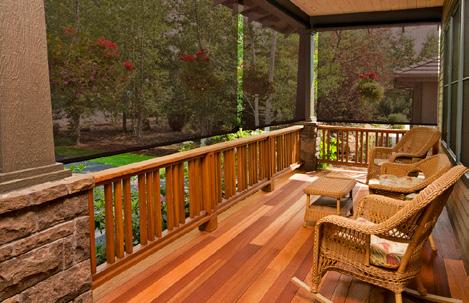

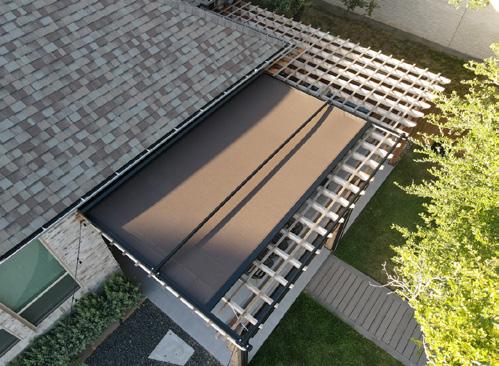



Monitor Audio has launched a new range of custom installation in-ceiling and in-wall loudspeakers, called the Creator Series, which replaces most of company’s prior custom ranges with a 19-model assortment that was three years in the making.
Creator Series offers 14 in-ceiling and five inwall loudspeakers, arranged in three clearly defined tiers. Each offers enhanced performance levels and additional functionality over the preceding tier.

A standout innovation within the series is the use of the patented Quik-Link terminal, which allows the installer to remove the terminal block from the physical speaker and pre-terminate the speaker cables to it. Once the speaker is ready to be fitted within its cut-out, the Quik-Link can be offered up to the connection point on the speaker and magnetically snaps and locks into place.
Other features include Tri-Grip II, an evolution of the dog-leg mechanism that is considerably stronger and more reliable than the previous generation, making both speaker placement and extraction even simpler.
On the four Controlled Performance (CP) models in the Creator Series, built-in back boxes mean hassle-free installation and controllable sound, even in the trickiest of applications.
Across medium and large in-ceiling speaker sizes, the acoustic team have kept the overall cutout sizes the same as previous models yet increased the driver size from 6.5" to 7" and from 8" to 9" inch drivers — pushing for greater highfidelity performance.
Driver technology has also been carefully configured within each Tier from C-CAM tweeters and mid-bass drivers (Tier 1), RST II mid-range and bass drivers (Tier 2), and RST II mid-range drivers and RDT III bass drivers (Tier 3). The Tier 3 in-wall model also boasts an MPD II transducer based on the THX Certified Ultra, Cinergy home cinema series.
Tier 1 of the Creator Series features a range of in-ceiling and in-wall loudspeakers designed for cost effective installations where product simplicity and solid acoustic performance is required. All Tier 1 speakers are a two-way configuration and feature new C-CAM midbass drivers and C-CAM tweeters with Uniform Dispersion (UD) Waveguide I.
All Tier 2 speakers are a two-way configuration, with RST II mid-bass drivers, based on those found in the award-winning Silver 7G range, and C-CAM tweeters with Uniform Dispersion (UD) Waveguide II.
Tier 2 models boast additional features that allow more freedom in speaker placement, such as boundary correction and high-frequency cut/ boost. Where enhanced performance is required, Tier 2 models offer a significant step up over Tier 1 models.
As part of the enhanced flexibility of the Tier 2 in-ceiling models, the new T2X combines the previous generation’s “T2” and “FX” to bring all the qualities of each into one highly versatile speaker that can be used in “cinema mono FX”, “mono wide dispersion” and “single stereo” modes.
All Tier 3 in-ceiling speakers are a three-way
configuration with RDT III bass drivers, based on those found in the new Platinum Series 3G. A new Inverted Dual Concentric II (IDC II) coaxial mid/tweeter range driver array, a ground up redesign, now features a larger voice coil to ensure the Uniform Dispersion (UD) Waveguide II can be used to control the high-frequency directivity. Effectively a point source, it creates an exceptionally large soundstage in the listening environment.
Additionally, the C3L-A offers a fixed-angle IDC II for focused sound, ideal for in-ceiling LCR placement. The now fixed 25 degrees of angle ensures that the linearity of the speaker is not compromised and provides wider dispersion into the listening area.
The Tier 3 W3M in-wall speaker is a highperformance 3-way arrangement based on THX certified Ultra Cinergy Series technology. It features an RST II mid-driver and MPD II transducer, which is positioned between dual RDT III bass drivers. A new rotatable IDC II coaxial mid/tweeter driver array is placed at the acoustic center of the speaker, which improves versatility for use in LCR placement.
Depth, detail, and bass are delivered in abundance, and Tier 3 models also contain additional features to allow even more freedom in speaker placement, such as boundary correction and mid/high-frequency cut/boost. x

Deliver the ultimate sports-watching experience with the Hopper ® 3, our most powerful entertainment platform yet. Watch four games at once, each in full 1080p HD resolution, with MultiView. Plus, beat the odds with on-screen betting from the DraftKings app — available only with DISH.

Level up with DISH
Custom Integration. Get the best- in-class expertise and support you deserve.
Dedicated VIP Support
Access to our award-winning VIP Concierge Team and elite technicians.
Recurring Monthly Revenue
Earn $1,200 in total recurring revenue per client.



$20/mo. over five years per eligible customer account.
Seamless Integration
Cutting-edge, control-platform-ready entertainment.
Snap One’s improvements to cloud servers are increasing reliability, stability, and scalability so more integration partners can increase their remote management capabilities through the company’s OvrC tech support platform.
Snap One says that it is accelerating investments in its cloud infrastructure to provide greater value, efficiency, and operational reliability for the brand’s integration partners and their clients. By enhancing the speed and consistency of its remote access solutions, including OvrC servers, the company aims to help integrators scale their businesses by streamlining day-to-day operations and simplifying installation, configuration, and long-term client care.
Integrators and end-users will benefit from consistent development of new features that improve connection reliability and scalability, with recent cloud investments targeting loadbalancing and multi-cloud architectures to offer heightened global resiliency and reduce the impact of connection outages. Internal improvements to platform monitoring and event logging are being leveraged to more quickly identify issues and enhance future responses, while automated testing flags any bugs so they can be patched before negatively affecting integrators.
Snap One noted that its cloud servers already help tens of thousands of users connect to and manage millions of devices all over the world through OvrC, offering “peace of mind and
enhanced services 24 hours a day, seven days a week.” Following growth in the platform’s user base and recognition of its deepening status as an essential business tool, Snap One says that they are more committed than ever to delivering “world-class performance and future advancements” that ensure continuously improved experiences and benefits for all users and stakeholders.
The company’s infrastructure enhancements focusing on speed and reliability have already improved performance for Control4 integrators and users, according to the company, with recent upgrades delivering 40% faster connections between the Control4 App and OvrC servers and reducing latency for Alexa and Google Voice interactions.
For security, Snap One has invested in Web
Application Firewalls (WAFs), improved backup and disaster recovery solutions, and advanced training on secure coding, all while ensuring all improvements are scalable into the future. Real-time alerts and periodic security assessments by third-party experts and internal white hat hackers ensure nothing is missed, while the company’s cybersecurity team expands.
“Snap One strives to be the most trusted company in our industry,” said Alex Mann, Snap One SVP of engineering for cloud, data science, cybersecurity. “We believe a kilobyte of prevention is worth a terabyte of cure when it comes to improving reliability, scalability, and security. When something goes wrong, it should have as little an impact and duration as possible. That’s why we’re continuing to invest heavily in cloud advancements and always seeking to improve processes.”
The OvrC platform offers a cornucopia of benefits for Snap One’s integration partners, including Wi-Fi site management and configuration, remote troubleshooting tools and automatic self-healing capabilities, remote monitoring with push alerts, and simple configuration for Araknis, Binary MoIP, WattBox, and Luma products, network configuration and management, and remote firmware and software updates including Control4 OS. The system has also evolved to improve vital customer relations processes, including internal data sharing for client contacts and rapid access to linked project resources and documents. x





With thousands of innovations to build on, the latest generation of the Lutron luxury portfolio, powered by HomeWorks, brings together best-in-class dimming technology, automated shades, and next-generation lighting fixtures to set a new standard for whole-home control.

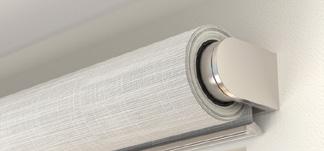
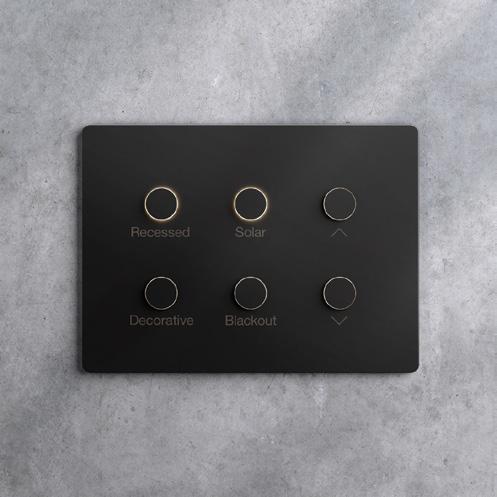

 For the most uncompromising home integration projects—discover HomeWorks. lutron.com/innovation
For the most uncompromising home integration projects—discover HomeWorks. lutron.com/innovation
It’s that time of year: when I get to start bragging about the CEDIA Expo Conference program. We have a killer lineup, made possible by the volunteer contributions of many of the industry’s brightest minds and best teachers. As I share my excitement, one question has really stuck with me:
“The CEDIA Expo Conference program isn’t just for business owners, right? It’s for everyone.”
That’s absolutely, exactly right. The conference program is big — more than 80 sessions. Whatever your goals for CEDIA Expo, there is a session that can help you meet them and with the CEDIA All-Access Pass, you get access to everything. While I could no more pick your “top ten” sessions than I could pick your favorite flavor of ice cream for you, I can offer some guidance on how to leverage the conference program so you can have the best CEDIA Expo ever. It all depends on what you’re coming to the tradeshow to do.
“If you’re new to the channel, CEDIA Expo is the perfect immersion course in residential AV. The whole industry is under one roof, and the conference can help you orient yourself and build practical skills. Here are a few tips for industry newcomers at CEDIA Expo:
Attend the Conference Pre-Game and PostGame: Rich Green of Rich Green Design and Michael Heiss of Harman International will kick off and conclude the conference with these freewheeling discussions of industry trends. These sessions help everyone set their agendas and debrief from three days of intense learning. If you’re new to residential AV, these sessions will help you put the whole tradeshow into perspective.
Not really into lectures? No problem. Learn
best practices for wiring, equipment placement, and more by building an actual rack under the expert guidance of CEDIA’s Chaz deVerdier.
There’s no better way to establish your credibility and commitment in this industry than CEDIA certification. Join our Cabling & Infrastructure Technician (CIT) Review session and take your exam right here at CEDIA Expo.

Every tradeshow is a professional opportunity. You’re not just there to browse new tech or party with your peers; you’re there to network, learn, and grow. There are many ways for established integration professionals to use the CEDIA conference program to take their careers to the next level.
At the risk of repeating myself, GET CERTIFIED. The ANSI-accredited Integrated Systems Technician IST certification is the gold standard for CEDIA technical professionals. Show you’re ready to lead by achieving your certification — we’ll help you prepare with the IST Certification Review session.
This year’s conference program features indepth, hands-on workshops on topics like network troubleshooting and immersive audio system design — two of the most profitable applications in today’s home integration market. Is there any better way to increase your value as a professional than honing these skills?
Why not become your firm’s go-to expert on emerging tech, such as generative AI, blockchain, or content fragmentation? Major
technological shifts are sending shockwaves through our industry, and we’re offering sessions on all of them at CEDIA Expo. Be the person prepared to guide your team through the transformations and explain their meaning for your clients.
The CEDIA Expo Conference program isn’t just for business owners — but it’s very definitely for them, too. This year, we have an extremely strong slate of sessions designed to help business owners master their operations, expand their offerings, and grow their networks.
CEDIA Expo gathers the industry’s true leaders, some of whom have been coming to the show for decades. For those in that rare air, the focus sometimes shifts from “How can I advance my career or my business” to “How can I make this industry better?”
Whether you’re a newcomer to the industry or a seasoned pro, the CEDIA Expo Conference program offers an unmatched opportunity to ignite your professional growth, elevate your business, and contribute meaningfully to our dynamic industry. x

It doesn’t feel like it was all that long ago when a business colleague called to tell me about this interesting new device that Amazon had developed. “It sits on your desk, and you tell it to control devices, ask it questions on a wide range of subjects and get a decent answer, have it play music, and do a wide range of other things from reading your schedule or keeping a kitchen timer.”
The idea of doing all of that with one device was interesting. I bought one, and in the eight years since, more than half a billion Echo devices have followed suit into consumers’ homes across the globe.
That tall black cylinder still sits on my desk and answers questions every day. Since 2014 the Echo product line and ecosystem has sparked other similar systems and devices, such as Google Assistant and Apple’s Siri and Home Kit. However, the march of technological progress is more than raw sales numbers and product longevity, it is the addition of new features and capabilities along with significantly lower pricing. By way of example, the firstgeneration Echo Show cost me $179. By comparison, none of the new Echo products announced earlier this year — the Echo Pop, Echo Show 5 3rd Gen, and Echo Show 5 Kids — costs more than $99. Put another way, for the price of the first Echo you can buy a new Echo
Show 5 with a built-in video screen and two new Echo Pop models.
Starting off, the Echo Pop has a different form factor from the prior Echo Dot models. Rather than sitting down with a puck-like appearance, it is described by Amazon as a “semi-sphere” with a round, 1.95” diameter speaker that faces forward at an angle. Powered by the Amazon AZ2 Neural Edge processor, it also features support for Matter, making it easier to connect and control compatible smart home products that work within the Alexa ecosystem.
The Pop also comes with “eero built-in,” which is said to enable the device to add up to 1,000 square feet of additional coverage to an existing eero Wi-Fi network.
With Lavender Blue and Midnight Teal added to the existing Charcoal and Glacier White Echo colors, Echo Pop is available for $39.99. It is worth noting that the price is $10 less than the current 5th Gen Echo Dot.

Two new smart display products were also introduced, Echo Show 5 3rd Gen and Echo Show 5 Kids. Both use the AZ2 Neural Edge processor, said to be 20% faster than the previous Echo Show 5 models. The 1.75” rear-
firing speaker is also new and is said to deliver clearer sound and double the bass of the Gen.2 model. As is the case with the Echo Pop there is also Matter support. Also new is an additional mic for improved response to voice controls, an improved 5.5” screen that features a compact design with an infinity edge cover glass.
Joining the standard Echo Show 5 line is the Echo Show 5 Kids. With a software suite that is both kid- and parent-friendly, it appeals to kids with jokes, homework help, and more. Parents will be able to take advantage of explicit lyric filtering and other parental controls through the Parent Dashboard. There is both a two-year “worry-free guarantee” and a one-year subscription to Amazon Kids+.
Echo Show 5 is available in Charcoal, Glacier White, and Cloud Blue for $89.99, while the Echo Show 5 Kids comes in a Chameleon or space-themed “Galaxy” design pattern for $99.99.
These new products are far beyond what anyone could imagine the Amazon Echo concept would become when it first hit the market. As competitors in the smart speaker and smart screen introduce their new products through the balance of the year, we will all be watching to see how the category evolves in terms of technology, features, and industrial design. If nothing else, it will be interesting. x
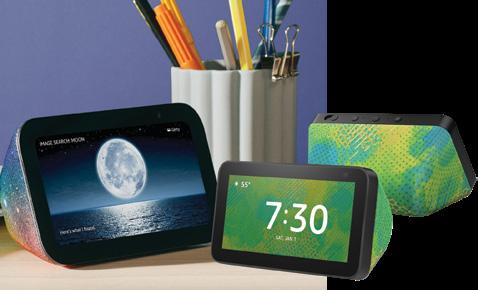
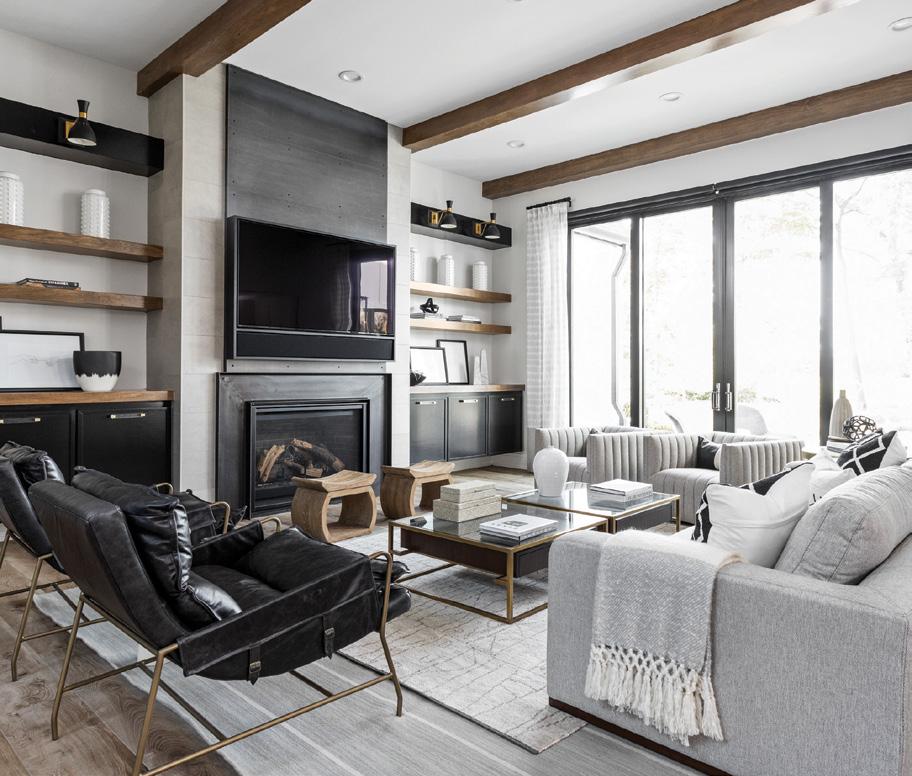


Since it was founded almost 15 years ago, Roku’s business has taken many interesting turns. Earlier this year, the company began selling its first Roku-branded sets sold under their own name.
The 11 new TV set models, available exclusively at Best Buy stores and BestBuy.com, are divided into two lines, “Roku Select Series TV” and “Roku Plus Series TV.” Both obviously use the Roku OS, and the 4K models all include HDR and HDR-10+.
The Roku Select Series models are designed to be value oriented and will be available starting at an MSRP of $149 with an expected street price of $129 with HD models in 24”, 32”, and 40” screen sizes and 4K models in 43”, 50”, 55”, 65”, and 75” screen sizes. Among the features that you may have come to expect from Roku streamers or Roku TV models from other TV manufacturers are auto speech quality and Roku Voice Remotes.
Perhaps looking for parity with other Roku, Fire TV, and Android/Google TV products powered products, Roku is also moving a bit more up market with the Plus Series. With prices starting at $649 and expected street pricing under $500, these step-up models are all 4K with QLED-technology panels. Aimed at a more premium viewing experience, they also add Dolby Vision, automatic brightness, and local dimming.
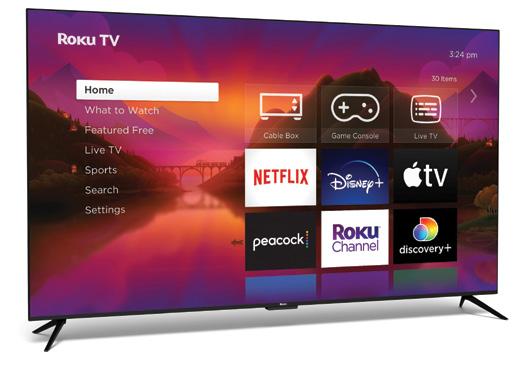
With connectivity a key element of any smart TV, it is worth noting that the Plus Series models offer Wi-Fi 6 connectivity for faster streaming and navigation response. Audio is upgraded with Dolby Atmos and Bluetooth private listening to complement the 3.5mm headphone jack on the remote.
As one might expect, the sets are designed to expand to full wireless surround with the new
Roku Wireless Soundbar, Speakers, and Subwoofer. To make navigation and control even easier, Plus Series models include the Roku Voice Remote Pro, which includes hands-free command, a lost remote finder function, personal and programmable shortcut buttons, and a rechargeable battery.
Given the current direction of streaming services and the content they deliver — including ad-supported, free “AVOD” and FAST-type services as well as paid subscription (SVOD) and pay-per-transaction business models — the latest Roku OS clearly looks to make content selection both easier and seamless, while capturing the ever widening range of content all under one OS roof.
With many broadcasters and networks reaching into the streaming world to maintain and expand viewership, it is not surprising that “Live TV” is a major category bucket aggregating more than 350 free, linear channels
across a wide range of genres. A particular focus is Local News. There, the choices may be personalized by location with AI powering the recommendations. “Local News” is also being added as a search term using either the search box or voice commands. Similarly, Roku’s Sports Experience will serve as the home to sports programming with content recommendations also personalized by location, favorite sport, team, or league. Live TV Channel Guide is a new addition to Roku’s “Premium Subscription.” This will allow users to more easily find and subscribe to new premium services. One other additional feature is “Continue Watching,” which gives users a single location that captures frequently used channels.
Having helped birth the smart TV concept, and with its OS already a major force with TVs that have licensed and used it for a few years, it will be interesting to track the future path of Roku’s smart TV sets. x



Savant recently introduced the Savant Smart Network, dubbing it “the only learning wireless network solution leveraging Juniper Mist Wi-Fi technology designed for smart home integrators.”
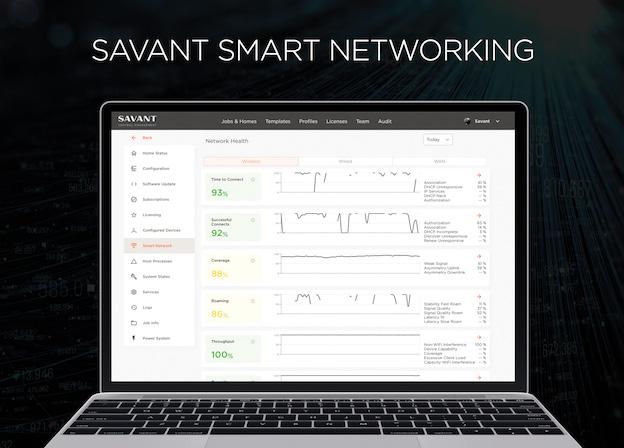
It might seem too soon to assess the success of partnership between Savant and Juniper Networks — a major player in the AI-driven wireless and wired networking segment. However, two of Savant’s veteran custom integrators who beta tested the technology for more than year, were quite enthusiastic about the performance of the solution.
“The Juniper range of this product performed as well as other competitive products in the marketplace, such as Ruckus and [Cisco] Meraki, but the Mist cloud with its AI has been exceptional,” noted Nick DeClemente, owner of Elevated Integration, in Armonk, NY.
Paul Bochner, owner of Electronic Concepts Hi-Fi, in North Rochelle Park, NJ, said that the Juniper tech within the Savant Smart Network, has been “game changing” for his company.
“It has been superior to other brands for us,” he said.
Juniper Networks is considered a leader in enterprise-grade networking and is run by some of the same people who developed the first Wi-Fi standard. Savant partnered with Juniper to develp the best long-term wireless experience for homeowners that was also more efficient to deploy and more profitable for integrators.
“The information that comes out of the system is exceptional,” DeClemente confirmed. “Then couple that with the ease of deployment,
now your average-level technician gets you to a really high level of performance without having to be network-certified engineer.”
The Savant Smart Network applies artificial intelligence (AI) and cloud-based analytics to create a learning ecosystem for optimal wireless performance throughout the home. The Savant Smart Network uses a combination of Wi-Fi 6 or Wi-Fi 6E access points from Juniper. Paired with a Savant Smart Networking Subscription, each Savant Smart Network utilizes Juniper’s Mist Cloud, artificial intelligence, machine learning, and data science techniques to optimize user experiences in real time.
these changes, so you can track and see why it was needed. Before Juniper, we often would need to make site visits to assess interference or other environmental issues, make changes, and spend time. Now, Juniper just does the work.”
Savant points out that user privacy and security is always paramount, so no user data is captured or stored in the cloud. Yet, direct integration with Juniper’s Mist AI allows Savant integrators exceptional visibility into the user experience through customizable Service Level Expectation (SLE) metrics that are now accessible in Savant Central Management.
DeClemente has found that the combination of the Savant cloud for monitoring integrated home devices with the Juniper Mist cloud for monitoring the network enables an “average technician” to assess a service question anywhere in the home without having to be an expert.
“Because it’s a familiar interface, they don’t get nervous… they’re not clicking the wrong thing,” he explained.
The advantage of the Savant Smart Network, Savant’s Aaron Gutin said, is that it is “always working” and offers analytics that are much faster and more precise than human data analysis.
“Juniper has true AI built into their software,” Bochner pointed out. “The system can recognize many potential issues and make adjustments on the fly without requiring us to log in, roll a truck, etc. Their system even charts
In addition to delivering better automation and simplified deployment of even the most complex wireless networks, Savant Smart Network analytics provide instant root cause analysis and real-time user metrics, enabling integrators to differentiate their businesses by delivering significantly faster customer service to their clients. Users will benefit from a network infrastructure that is more predictable, reliable, and measurable.
Gutin noted that there is a service charge for accessing the AI-cloud solution that runs $120/ year per access point or $10/month. This subscription is sold by the Savant integrator who earns an ongoing revenue share on this fee.





 By Jeremy Glowacki
By Jeremy Glowacki
Joe Borress is on a mission to make electrical, technology, and lighting design a priority instead of an afterthought. His lifestyledriven approach, deep experience with technology and integration, and design insights, make him a sought-after designer and consultant. His unique point of view is refreshing and his captivating stories about projects being done the wrong way, before he stepped in, will surely entertain.
Borress is the founder of Tri Star Electric & Automation, a full-service lighting, electrical, home automation design, and consulting firm for the ultra-luxury residential market. He has created exceptional lifestyle-driven experiences in some of the most beautiful homes in the country.
As a third-generation electrical contractor, Borress grew up immersed in high-end New York City construction projects. From a young age, he was passionate about learning the trade and understanding how things worked. His curiosity, meticulousness, and personality helped him to rise up through the industry, managing large construction teams in midtown and supervising luxury residential projects in the most exclusive neighborhoods. Borress has spent decades navigating and troubleshooting complex job sites, and he has seen it all.
Throughout his 30-year career, Borress has worked with celebrities, high-net worth individuals, and renowned architects in the ultra-luxury residential markets of NYC, the Hamptons, Greenwich, CT. He has also created elevated guest room experiences through his technology designs for luxury hospitality projects.
Drawn to California’s sunshine and quality of life, Borress and his family moved from the east coast to Malibu in 2013. He attributes his initial success in the most exclusive areas of Malibu and Southern California to his positive mindset, strong belief in his vision and expertise, and his ability to add value. Wanting to make a bigger impact, he regularly works on projects throughout the country, as well.
With that background for context, we wanted to learn more current insights from one of the most successful CI business owners in the industry. This portion of our conversation with Borress has been edited for length and clarity from Episode 136 of the Residential Tech Talks podcast.
Residential Tech Today: You are a thirdgeneration electrical contractor from New York City. How far back do you recall being interested in tech and the electrical trade of your father and your grandfather?
Joe Borress: It really started in the fourth grade. I specifically remember the actual day. I lived in Staten Island at the time, and I was playing outside during recess. I looked over and saw my father. And, every kid that sees his dad at school is kind of nervous. He was with somebody who worked for him, named Anthony. I ran over to them and said, “Dad, what’s going on? What are you doing?” And they were working on the lighting for the outdoor play area. That was when I first got intrigued about fixing something that involved
lighting. It was just really exciting to me. After that, I wanted to go to work with my dad when I had a day off from school or some days over the summer. Then I had the opportunity to work with my grandfather, which was wild because, you know, he was very old school… very tough.
RT Today: After many years of working on the electrical side, then corporate IT and low-voltage work in large commercial office buildings in New York City, how were you able to shift into high-end residential work?
I was making good personal connections with these CFOs of these companies. The next thing you know, I’m invited to their Park Avenue apartments for their renovation meetings with their residential general contractors. It was more through the relationships from these landlords and their high-end tenants or hedge fund guys that wanted us to now work in their homes. Then I really learned a lot about the residential business, like how different it is, especially when I got out to Connecticut and started understanding how wealthy homeowners live. Once my wife and I had our first child, we moved out there too, and then I had an office in Greenwich.
RT Today: What was the transition like establishing your business in Los Angeles after you moved your family out there?
A lot of architects, interior designers, and general contractors have bicoastal offices, so when I started calling on them, they were happy that I [had moved to LA], and I built a really great team. We didn’t start in residential initially. It was easier to begin with high-end commercial projects, like Apple Stores, H&M, Rolex, and Peloton flagship retail stores. But as the bidding kept getting more competitive, I felt like we
were selling ourselves on price rather than the skills and experience that we were bringing to the table. It was within luxury residential spaces where I knew I could bring more value.





RT Today: When you switched to back to the high-end residential market in LA, what was that expertise or value that you pitched to potential clients?
I bring my lighting design capabilities and, frankly, my understanding how wealthy people live. If it’s their second or third home, I love talking to them about how they are expecting to live in the home. Where do they listen to music? Do they have kids? Do they travel? What’s their routine? Are they light sleepers? Knowing those answers, I can design the job properly or educate the design team that they already have in place to see how I can help. Because for you to tell me to just do something based on the drawings, that’s not really what I enjoy.
RT Today: I’m assuming you have developed strong relationships with builders, so your work can be integrated earlier in a new home or renovation project.
I have, but I want to develop more of them because a lot of builders are still, you know, under the gun, too. It’s not like they don’t want to do a great job, but they’re busy, too. The good news is that we have a really beautiful showroom
here in Malibu where I sit down with [design partners] and talk about their future and past jobs… what to look for. I go through all the different systems. I demonstrate Ketra lighting and obviously all the different keypads. And what is a keypad? What does that mean? Panelized lighting… Some people don’t even know what that means versus RF and why we like to have low voltage keypads. We talk about shading and pockets for shading and what is room darkening versus blackout. It’s everything that every integrator and lighting designer and electrical contractor have to talk about.
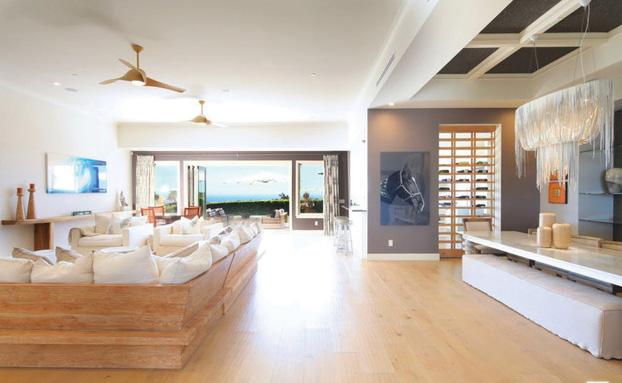
RT Today: Speaking of lighting, you market your strengths not only as a licensed electrician and low-voltage integrator, but also a lighting designer. What was the process for you developing that particular skillset?
There was a lot of on-the-job training working for 30 years in commercial, retail, and high-end residential environments. Knowing all these manufacturers, physically installing these products. I was working with my tools and really understanding layers of light through my own education and then through the American Lighting Association where I became a Lighting Associate. But, there’s nothing like getting your hands dirty. I think lighting designers that go to
school for architecture and lighting design are brilliant, but they also need field experience and practical knowledge. I’m still trying to wrap my head around how successful are integrators going to be getting into lighting where they don’t know how to install it, wire it, they’re not licensed to do it, they’re not the electrical contractor on the job. I’m a little bit of a unicorn in the industry, so I just really hope it doesn’t come across like anything except for genuine concern for the industry. There’s a lot to learn.
RT Today: On the flipside, with your background with electrical contracting, were you prepared for the entertainment tech part of the residential installation, such as specifying loudspeakers, for instance?
It was a little bit of a learning curve because every manufacturer wants to sell you their product. Once I started getting involved with the different speaker manufacturers, it was a little overwhelming. That’s what’s good about having access to the manufacturer’s reps. They’re very helpful because when a client tells me something like, “I want really good sound, and this is where I want it.” That’s all I need. I’m not going to bother the client with all sorts of technical information that will just overwhelm them. It’s all about providing a great experience. x
There are options galore when it comes to outfitting a new home with technology. There’s the basic plan that involves the addition of a few key components, the room-to-grow approach that starts small but gradually expands, then there’s the all-out, no-holds-barred method. The owners of this custom home chose the latter.
“Above all, they wanted high-performance from the systems on their newly built dream home,” said Scott Newnam, CEO of Audio Advice, the integration firm hired to take technology to the next level in this custom 14,000-square-foot residence. “They had experienced home electronics in their previous homes at moderate levels, and now they wanted something better, something that afforded even greater ease of use and exceeded their expectations on every level.”
Challenge accepted! With more than 40 years of home-tech experience under their belts, the integration team at Audio Advice knew just what to do. They would integrate a wide variety of time-tested technologies into the residence and tie them all to an advanced control processor from Control4. Able to manage, monitor and automate every light, thermostat, AV component, security camera, and much, much more, Control4 would deliver everything the owners dreamed of — simplicity, fun, and a clean, modern aesthetic.
In a home as large as this, it would be challenging to operate one system, let alone several, without the help of a professionally commissioned control platform. What may be a
simple task of turning off the lights and closing the window shades in a modest-size home becomes an overwhelming chore in a large estate property. The owners recognized this and welcomed the addition of a Control4 system to not only manage a combination of highperformance DMF and LED linear lights and Lutron motorized shades, but also a wide assortment of AV equipment, thermostats, and a high-end security system along with numerous surveillance cameras.
“Most of the subsystems managed by the Control4 system are part of the Snap One family so they work seamlessly together,” Newnam said. This helped streamline the installation, and with the addition of an Araknis Wi-Fi network, assures the family the utmost reliability and performance of their home-tech investment.
To further simplify control, Audio Advice provided the family a Control4 smartphone app, handheld remotes, and wireless keypads from which a single command instructs multiple devices. Even the security system helps out. For example, when the family arms the security system and exits the home, anything that’s been left on turns off and the lights intelligently switch on and off to make the empty house look occupied. Systems also adjust according to the time of day and other prescribed conditions.
The owners don’t even need to be home to manage the household — the addition of an OvrC remote monitoring system makes sure of that. It integrates with the home’s Control4 system, enabling the same level of control that
the owners enjoy while at home from anywhere in the world.
Single commands kick-start all the fun parts of the home, too, and there are endless options. Music by the swimming pool. Check. Movies in the master bedroom. Check. Audio Advice outfitted every area with in-ceiling speakers.
Samsung TVs accompany the audio in many rooms. Great features, certainly, but this family wanted even more. The dedicated home theater, home gym, and golf simulator woven into the Control4 platform deliver a new dimension of excitement and fun to their lifestyle. “We designed these areas to rival the best in the world,” Newnam said.
Measuring an impressive 21-by-19 feet and accommodating three rows of seating, the theater features some of the finest components on the planet. A 165-inch Stewart Filmscreen screen paired with a high-performance 10,000 lumen Sony projector and JBL Synthesis sound system and Anthem processors deliver an immersive experience, synchronized to activate on command from a Control4 remote or touch panel. The lights get in on the action, too, dimming to the ideal intensity levels based on whether the family is watching a movie, sporting event, or gaming.
Adjacent to the home theater is a Full Swing golf simulator matched with another high lumen projector and a commercial-grade home gym featuring an 85-inch Samsung TV mounted flush with the mirrored walls and in-ceiling Bowers & Wilkins speakers. Like the rest of the
house, the Control4 system provides easy operation of all the technology.


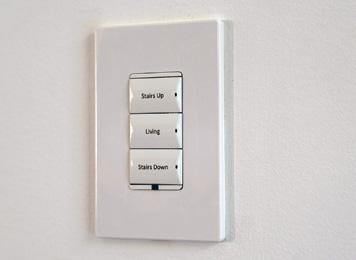
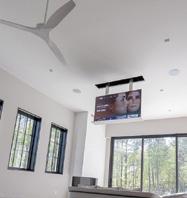
“The home was designed during the COVID pandemic, which inspired the family to include amenities that would make staying at home as comfortable and enjoyable as possible,” Newnam said. “We succeeded on every level with this amazing entertainment mecca.”
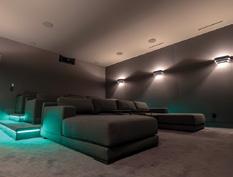
Despite the abundant technology, much of it goes undetected. Speakers disappear into the walls and ceilings, the master bedroom TV descends magically from the ceiling, and although visible, the Control4 wall keypads underscore the home’s minimalist design.

“When one keypad can do the job of several individual light switches, it drastically reduces wall clutter,” Newnam explained. “It turns what could have been a visual distraction into a beautiful process.”
The sleek, custom-engraved keypads contribute to the overall aesthetic, but Newnam acknowledges the master bedroom as the epitome of form and function coming together to create a one-of-a-kind smart home experience. Floor-to-ceiling windows across an entire wall add beauty to the space and called for a creative approach to the design and integration of technology. While
aesthetically pleasing, the windows would require a significant amount of shading to darken the room for bedtime and movie watching.
The owners have a choice of sheers and blackout shades, each motorized to roll down individually from a hiding spot in the windows on command from a Control4 touch panel or keypad. The sheers let the owners enjoy the outdoor scenery while maintaining their privacy; the blackout shades completely block out the sunlight and automatically descend when the owners activate the 65-inch Samsung TV. Like the motorized cassettes that house the shades and the Bowers & Wilkins speakers, it too is tucked in the ceiling.
“The large expanse of glass limited wall space available to mount a TV, so we worked with the architect to create a cavity above the ceiling to place the TV there on a motorized lift that lowers it into the room,” Newnam explained.
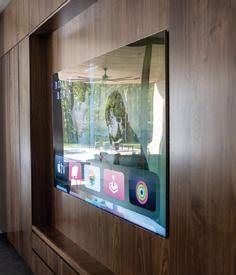




By applying integration ingenuity and putting Control4 in charge, Audio Advice achieved all objectives — remarkable performance, discreet design, and simple home management. The owners now have the home of their dreams — a place where they can relish the finer things in life…one simple button press at a time. x

USB-C: the one connector to rule them all. The compact design makes it compatible with even the slimmest mobile devices, while the dense pin-out (24 pins compared to USB Type A’s four) opens data and power transmission possibilities for extremely high-demand applications.
A USB-C port can theoretically replace ports for USB-A, USB-B, HDMI, DisplayPort, 3.5 mm audio, Ethernet, power, or all of the above, with total backward compatibility and up to 5V/240W of bi-directional power. Devices can be daisy-chained using multiple USB-C cables, massively simplifying cable management. And, of course, the Type-C connector is symmetrical, so there is no more rotating and mashing the USB connector into the port to get it inserted right-side-up. The era of true, plug-and-play connectivity has arrived!
Yeah… How’s that working out for you?
If you’ve struggled to get any benefit out of
USB-C in your AV solutions, well, you’re not alone. Running through that deceptively simple connector, there is an alphabet soup of confusingly named protocols and optional features.
A USB-C port might use any transfer mode ranging from USB 2.0, with its measly 4.5W of power and 48 Mbps of data, to USB4 Gen 4 (seriously, these names), with up to 240W of power and 80 Gbps. Intel’s Thunderbolt transport protocol uses the USB-C connector as well, but not all USB-C cables are Thunderboltcompatible. Some USB-C ports are capable of multiple transfer modes, and many host devices have multiple USB-C ports, each with different capabilities: often you don’t even know what kind of signal you’re going to get until you hook up a couple of devices and watch what happens.
In the early days of USB-C, many tech professionals were burned by the inconsistent implementation of USB standards. The latest USB transport protocols can stand up to – and

streamline – the most demanding AV applications, from 4K videoconferencing in home offices, to high-performance gaming and live streaming, to sophisticated media rooms. Despite the ease-of-use of the connector itself, though, it still takes a lot of research and QA to select the right components. Let’s examine what makes this “universal” connector more of a multiverse of madness.
When USB-C was introduced in 2014, many device manufacturers leapt to adopt these powerful, streamlined ports. However, most adopters only enabled a limited set of USB features. In the early days, the vast majority of USB-C ports were configured only for power transmission and even that simple function was deceptively complicated. Though USB cables and chargers all look identical to the average consumer, many device manufacturers implemented proprietary fast-charging protocols that worked only with their own

branded products. Mix and match brands, and the devices might still charge (albeit at a much slower than advertised rate) — or the charger might deliver an unexpectedly high wattage, damaging the host device.
The versatile USB-C connector also allowed USB transfer modes to advance their capabilities dramatically—which in turn resulted in some very challenging distance limitations. For example, USB4 Gen 4 transfer mode can achieve up to 80 Gbps symmetric data transfer, or 120 Gbps asymmetric transfer, over a passive USB 3.1 Gen 2 Type-C cable — enough data and speed for an 8K video signal at 60 Hz — but the max distance is less than one meter. That might come as an unpleasant surprise to consumers who have no idea why the 10-foot cable they bought on Amazon doesn’t work. The fact that USB cable and transfer mode naming conventions are an impenetrable mess doesn’t help matters much.
Despite the vast delta between expectations and reality in early implementations, USB-C adoption has continued to pick up steam among manufacturers. COVID-19 played a big role in driving adoption forward: as millions of people scrambled to cobble together working offices and classrooms in their homes – and upgraded their home entertainment systems to keep themselves sane during lockdown – the benefits of unified connectivity snapped into focus for consumers and manufacturers alike. Education use cases were especially impactful: suddenly, a majority of U.S. school districts were furnishing students with Chromebooks for everyday learning. These lightweight devices needed fully featured USB-C ports to meet application demands. This perfect storm of need drove manufacturers to pour refreshed investment into USB-C.
As the USB Implementers Forum has released more and more powerful transfer modes, a growing number of products have expanded USB-C port functionality to include audio/ video, variable bidirectional power delivery,
data, and control. Alternative Modes (alt modes) are central to the expanding utility of USB-C. Alt modes dedicate some of the physical wires in a USB 3.1 cable to direct transmission of specific protocols. Currently, the USB Implementer’s Forum has five alt mode partners: DisplayPort, MHL, Thunderbolt, HDMI, and VirtualLink. Of these, DisplayPort and Thunderbolt are by far the most frequently implemented, though HDMI alt mode implementations are increasing, and transporting HDMI signals over USB-C via an adapter cable is already quite common.
Alt modes are optional. Commonly, devices with multiple USB-C ports will enable alt modes only on some of them, usually indicated by an alt mode partner logo next to the port. To work consistently, every link in the signal chain needs the proper alt mode support from host devices, ports, cables, and hubs. Still, with careful product qualification, it is now perfectly possible to use this one connector for a whole host of applications, including AV transport.
These Alt Modes offer very attractive signal transport options for monitors, projectors, or other external displays, especially as manufacturers have transitioned away from proprietary charging protocols to standard USB Power Delivery (USB PD). USB PD solves those early power problems by means of a chip embedded in the connector. Cables that support USB PD negotiate with any connected host and hub devices to determine their capabilities and deliver the right amount of power to each device. Power supply is bidirectional and configurable up to 48V, 5 A, and 240w. With these capabilities, a display can easily power a connected source, simplifying cable management. Of course, this is all dependent on using the right cables; if you’re using an older USB-C cable – one that lacks a chip or doesn’t advertise its power capabilities – then you’ll never get more than 15W out of it.
As USB-C marches toward ubiquity, its distance limitations are going to become a real

problem. The USB Implementor’s Forum doesn’t specify a maximum cable length for USB 3.1 Type-C cables, but generally, passive cables should be no longer than 0.8m for USB4 Gen 4 transfer, and even active cables can rarely exceed 5m. On top of that, high-quality USB cables are wildly expensive. To reach true universality, there is a growing need for more extension options over Cat6A or fiber. Just like with HDMI before it, this increasingly ubiquitous (and stealthily complex) “plug and play” consumer connector is going to spawn whole new categories of professional products.
In the future, USB-C is going to be the most common port across phones, tablets, displays, computers, source devices, and more. It’s going to look simple, until you read the specs and realize that all of those ports have very different capabilities. USB has a variety of transfer modes, a range of optional features, and full backwards compatibility for a reason. Some devices have very limited power and data needs; consumers shouldn’t be forced to buy a $100 cable to charge their Fitbits.
Supporting collaboration, high definition displays, and other high-demand applications will require more sophisticated components. Don’t let the simple face of USB-C fool you or your clients. As we march into the USB-C era, be ready to do some deep product research and in-house testing to fully verify component capabilities and compatibility. Label everything; you don’t want your tech onsite mixing up the $10 cable and the $1000 cable.
For the moment, it seems, we live in an era of “almost-theres” and “not-quites” in the flux of an advancing technology. And, yet, the promise still holds: a single connector, capable of handling an array of tasks across numerous devices, without the chaos of tangled wires and incompatible plugs. We’re already living in the era of “one connector to rule them all.” Now, we just need the right mix of cables and extenders to bind them. x

ATSC 3.0, also known as NEXTGEN TV, is a totally new IP-based TV broadcast system that can do many things that ATSC 1.0 (FCC approved in1993) cannot do: 4K and HDR video, multiple captioning options, targeted emergency alerts, immersive sound such as Dolby Atmos, more closed captioning options, special in-program supplemental material such as sports stats, and much more.
That’s the promise anyway. The reality is that you probably will not see all of these ATSC 3.0 features right away from broadcasters, and some stations might not implement them at all.
NEXTGEN TV is still relatively new, so you probably have some questions about it. In this article, let’s answer some of them using the same technique that your high school English teachers taught you about writing write a term paper or book report. If you’ve forgotten, that involves addressing the “Who, What, When, Where, Why and How” of the topic at hand.
Perhaps the question most asked is “Why?” “Why do we need a new broadcast TV system in a world of cord-cutting, and isn’t the system we have good enough?”
That “Who” may well be you. With pricing for cable and streaming services continuing to rise, shouldn’t something that is, by definition, free a good deal? Think about it. Now that there are ad-supported versions of some of the streaming services, why pay a news, sports and entertainment programming that you can receive at no charge? That answers the “Who” and part of the “Why”.
Another part of the “Why do we need this?” is that broadcasters need to deliver a better product to compete with streaming services. Switching to an IP-based system allows them to deliver new technologies. In an ever-changing market, these features are becoming not just “nice to have,” but “must have.” NEXTGEN capitalizes on combining the localized nature of TV broadcasting and an optional internet backchannel to better serve a wide, but locally targeted, audience. Oh, and do I need to say again? This is all for free.
That starts us off with part of the “Who?” and “Why?” but it brings us to more “Who?” questions as well as some “When?” and “How?” still to be answered.
The simple answer for many of you to the first two “W’s” increasingly is “now.” As this is being written, well over 60% of the markets in the U.S. have some NEXTGEN stations, with more being added monthly. Going forward, many of the missing major markets, such as New York, Chicago, Philadelphia, San Diego, and Minneapolis-St. Paul, will light up their NEXTGEN signals before the end of the year. The “Who?” is also the full range of commercial and public stations.
Another “When?” is “When will the current ATSC 1.0 signals go dark?” The FCC hasn’t set a hard shut off date at this point, but the reality is that for now stations can, and most likely will, keep their current signals up for some time to come. Evidence of that is a recent FCC ruling as extended that requirement that stations simulcast their ATSC 1.0 programming on their
new NEXTGEN channels at least until July 17, 2027. A further consumer protection is that stations must continue to broadcast in the current standard for at least five years after starting up the new technology.
That makes sense, as there simply aren’t enough NEXTGEN receivers or external devices in homes right now to justify a “turn off” (as happened with NTSC back in 2009). My opinion is that we won’t see the type of shut down we saw in the digital transition for quite a while.
That brings us to another “When?” “If NEXTGEN is so great, then when will we see the oft-promoted advantages?” The answer is that some of them have started to appear. For example, thanks to improved compression techniques, ATSC 3.0 content may be broadcast in higher resolution than its ATSC 1.0 cousins. For example, in Los Angeles two of the three stations with NEXTGEN TV broadcast in 1080p while their ATSC 1.0 signals stick with 720p. Even better, some stations owned by Sinclair Broadcasting transmitting in NEXTGEN are already using “Advanced HDR by Technicolor” 24 hours per day. HLG and Dolby Vision for live broadcasts is also possible, and we may see that soon, as well.
Pilot programs and initial tests are now underway for some of the highly promoted advantages of NEXTGEN, such as enhanced emergency alerts and “one-to-many” data for emergency responder and medical personnel pagers. Remember that ATSC 3.0 has been in development for many years, but it is still in the
relatively early rollout stage. Given the investment in ATSC 3.0 by many companies on all sides of the technology fence, there is no doubt that we will see many of the promised features as time marches forward.
The last pair of the questions to be answered are, “How can I get NEXTGEN TV?” and “When will there be more devices available for me to receive it?”
The “How?” in this case, is perhaps more of a “from Whom?” but the answer at this time is that there are sets with built-in ATSC 3.0 tuners from Hisense, LG, Samsung, and Sony. Other brands have said that they are looking at the technology, and you can interpret that as their offering it as soon as it is needed to avoid losing sales by not having a requested feature. Another “Who” is MediaTek, which is one of the leading developers and manufacturers of the SoC (System on Chip) solutions that are the heart of many TV sets. MediaTek’s complete NEXTGEN/Smart TV solutions are now available whenever manufacturers want them.
How about, “How can I receive NEXTGEN TV” if I don’t want to buy a new TV set right now? And, What are my options?” You may recall that during the first digital transition, each household could get two government-paid $40 coupons good toward the purchase of external tuner/decoders. This time around, that type of program seems highly unlikely because there is no mandatory switchover. However, you can buy a set top tuner/decoder just as you could then. Among those currently available are BitRouter’s ZapperBox M1, HD HomeRun from Silicon Dust, and a new product from Atlanta DTH (ATDH). There will be more such products on
the way that may start reaching the market later this year.
BitRouter provided me with the ZapperBox M1, and I can report that it definitely does a very nice job of adding NEXTGEN to my current TV. Even better, it is constantly being updated and will soon add off-air DVR capability for both ATSC 1.0 and 3.0 signals. At $249.95 for a single tuner model, it is admittedly a bit more expensive than the tuners from the ATSC 1.0 transition, but this is a considerably more complex technology as it includes DVR, HDR, 4K capability, and frequent internet-delivered software updates to add new features. ADTH’s NEXTGEN TV Box lists at $119, and as soon as my order arrives, you will see a full side-by-side review of the two products from RTT.
Here, I’ll add another “W” with “Will I need a new antenna?” The answer is that if you already have an antenna — be it indoors or outdoors — that receives current stations, then you should be just fine. Don’t fall for the “digital antenna” marketing, as there is no such thing. Yes, ideally we’re talking about a better antenna with more gain and an amplifier and ideally an outdoor antenna, but that has nothing to do with ATSC 3.0, specifically. A station’s output power and the distance from your location to their tower is what is important for any type of RF reception; not whether the signal analog or digital.
Case in point: where I live in Los Angeles all three of the current NEXTGEN signals are on the frequency originally allocated to Chanel 13. If you could receive that signal before, then you should be able to get all NEXTGEN channels without a new antenna. Some stations will may move their ATSC 1.0 channel frequency to
ATSC 3.0, also known as NEXTGEN TV, is a totally new IP-based TV broadcast system that promises 4K and HDR video, multiple captioning options, targeted emergency alerts, immersive sound such as Dolby Atmos, more closed captioning options, special in-program supplemental material such as sports stats.



another physical channel, but if that happens, then they will almost certainly run announcements reminding you to do a simple channel rescan.

A couple final “W’s” that I’ve been asked about are, “What’s the deal with encryption?” and, “Will the new signals be copy protected?”
According to a blog post in May 2023 by Anne Schelle, managing director of Pearl TV, enhanced signal security is essential to prevent hacking to protect content. However, all current NEXTGEN sets are, or can be upgraded to compatibility with the system. Similarly, external set tops that will carry the NEXTGEN TV logo will be certified for compliance with the authentication system.
At the end of the day, the final “W” question is, “Whither ATSC 3.0/NEXTGEN TV?”

Hopefully I’ve answered the questions in a way that would make my high school English teachers proud. In summary, NEXTGEN TV is already here for many and is coming to more areas all the time. The sets and external set-top tuner/ decoders are here with more on the way. The benefits are beginning to be experienced and more of those are also on the horizon.
There is one final question to be answered. It does not start with a “W” or “H” but may be the most important one: “Is it worth it to me and should I add it to my palette of content and program sources?” The answer depends on many things but looking at the current and potential features for many of you the answer will be “yes.” Broadcast TV isn’t going away, and NEXTGEN TV is one of the main things that, in the long run, will keep that from happening. x
Every home has windows and lots of them. For custom integrators, windows represent an attractive and profitable way to further enhance the convenience, comfort, and style of a home. In this era of automation and innovative technology, motorized window shades have emerged as a game-changing solution.
As the demand for smart solutions continues to rise, integrators have a unique opportunity to tap into the market for motorized window shades. They help to increase the value of a home while adding a substantial profit margin for integrators. However, selling motorized window shades requires more than just offering a product — it necessitates a strategic approach to effectively meet customer needs and drive sales.
For some integrators, the idea of selling motorized shades seems more fitting for interior design businesses. Yet, there’s something that installers know that designers and architects don’t: how to integrate technology.

Shades are a natural fit in the world of AV. Behind the fabric options, motorized window shades are, at their core, another piece of the smart home experience. Homeowners want to bring their shading under the same control as their lighting or home control system. Shading is also a component of human-centric lighting, a growing trend for homes looking to reap the productivity, wellness, and lifestyle benefits of circadian lighting. In fact, CEDIA’s 2022 Integrated Home Market Analysis listed lighting
and shading among its top categories experiencing the most growth.
“Most AV dealers don’t realize the amount of [profit] margin that’s in shading,” said Shane Silloway, president of California-based Shade Partners. “It has a huge profit center that they’ll see right away, unlike other AV products. Hypothetically, if you sell $100,000 job, and you’ve got a decent multiplier, you’re going to make $50,000.”
For integrators looking to tap into shading, here are some key strategies from experienced dealers that can help AV integrators maximize sales and provide exceptional user experiences.
Residential installers are in the sweet spot when it comes to offering shading to their customers. “You’re already in the home,” said Dave Wexler, senior director of sales and marketing at EOC Audio in Lisle, IL. “So, the hardest part — finding customers — is done.”
With that in mind, as integrators plan out home AV projects with existing customers, they should take advantage of that time to also remind them that they do shading.
“AV integrators are in there much earlier than even an interior designer or a window covering dealer,” Silloway added. “At the beginning of the project, just simply say, ‘Hey, we offer shades. I don’t know if you need them, but I can run a
quote if you’re interested.’ That’s how so many of our dealers still approach it.”
In addition to having shading listed on its website, EOC Audio recommends that shading is listed on any leave-behind or email marketing materials.
“If you do a lot of business with builders, make sure they’re also aware that you offer shades,” Wexler noted.
“A traditional window covering dealer is typically in too late,” Silloway confirmed. “They’re not going to find out until the house is already built. At that point, everything’s already closed up and no wires can be run, which means they can only offer manual or battery-operated options.”
For some installers, shades can be an overwhelming proposition because they’re very custom. For those who are hesitant to get started, Silloway advises that installers lean into the skills that make them great at AV — listening.
“Break it down to the simplest denominator by listening to the customer,” he said. “What’s the experience they’re wanting? Do they need to completely block out the sun or are they looking for privacy and light filtering? Maybe they want a human-centric lighting system that ties their lighting, shades, and control system all together. Find out their needs and go from there.”

When it comes to deciding on a shading system, the consensus is that installers should start with the one that’s compatible with their chosen AV or lighting control system, such as a human-centric lighting control solution, which harmonizes natural and artificial lighting to create the perfect lighting environment to fit the homeowner’s lifestyle throughout the day.

“You’ll save yourself a lot of time if you already know it’s a shading system that will integrate and play nicely with the control system that you’re familiar with,” Wexler said.
Like any audio, video, or control solution, shading brands each have their own features that make them unique. It’s a good idea to learn these features and how to align them with what the client is looking for. For example, if the homeowner wants motorized shading in a guest bedroom or bathroom, a controller may not be ideal in those spaces. Legrand Shading, for example, offers a patented manual override feature for its automated shades so anyone can open and close them, with or without a controller.
Manual override control is also great in the event of a power outage. According to the U.S. Energy Information Administration, customers experienced an average of 1.3 interruptions and went without power for four hours in 2016. That number has only increased with extreme weather conditions in several states putting a heavy demand on electricity use. Bearing the expected electricity shortfalls that are predicted by North American Electric Reliability Council (NERC) throughout most the U.S in the coming years, integrators can help manage any limitations this might cause for homeowners. This will allow homeowners to manually raise or lower the shade to the desired position in any situation.
Don’t try to know all the fabrics. When first starting off, start with small selection of go-to fabrics that will work in just about any space. Silloway likes to choose one neutral and one darker shade (one for blackout and the other light-filtering.)
“It’s the perfect combo if you need to do shades in the bedroom and want the same fabric
in the living room — same style, different needs,” he said. He also recommends having a decorative fabric choice in the mix for clients who want something that’s a little different and pops a little more. Need both? A dual shade system allows the installation of two shades on a single window for greater flexibility in light management.
When adding shading to your business, the best approach is to work toward having a single person on staff dedicated solely to learning and overseeing shading projects. “Integrators don’t have the confidence in shade selling as they do in selling audio, video, distribution, or control,” Wexler said. “You have to have somebody who is really into it and gets it. It’s really its own revenue stream — almost like a business within a business. If you really want to capture those sales, this is the best way we’ve seen it done.”
The other alternative is to partner with someone who is already proficient in shading, like Shade Partners. Silloway himself has been in the business for 35 years, learning first from his father, who was a residential window covering supplier. He knows everything there is to know about shading and now, through his company, partners with AV integrators, builders, architects, interior designers, electricians, lighting designers, and window covering professionals. “If you want us to just handle your installations, we’ll do your installation,” Silloway said. “If you want us to sell it for you, we’ll sell it, too. And there’s still a great profit margin.”
Once the installer arrives at what the client wants, then it gets down to the nuts and bolts of shading — measuring. Measuring, like anything else, takes practice and is where mistakes most often occur. For that reason, both Silloway and Wexler recommend measuring three times. Get
comfortable using a steel tape measure or a laser measuring device, starting with the windows in your own home. It’s also key in this process to know what manufacturer tolerances, i.e. the amount they deduct for an inside mount shade, which can be anywhere from 1/8 inch to a ¼ inch. “That way, you know when you take your finished dimensions, you know exactly what you’re getting,” Silloway said.
The future is bright for selling motorized window shades. While initially it can be daunting, it can be an incredibly lucrative venture for installers. Start with a solid foundation. Identify someone who is prepared to take on the role of shading champion. That person can stay committed to overseeing the entire process, from training to sales and installation.
Because there are so many options and possibilities, keep it simple in the beginning. Pick solutions that are compatible with the chosen AV control system for a smooth installation experience, look for shading features that will provide a broader use case across the home such as manual override, and select a few fabrics that will fit almost any space. Finally, measure, measure, and measure again. By embracing these best practices, AV integrators can ride the wave of demand for motorized window shades and make it a shining addition to any business repertoire. x





 By Jeremy Glowacki
By Jeremy Glowacki
The pandemic impacted Tony Kanaan’s quarter-century auto racing career in multiple ways back in 2020. First, the world-renowned Brazilian driver’s NTT IndyCar Series retirement plans were stymied because he could not take a celebratory lap to honor fans in what would have been his final season. Then, in an unexpected twist, Kanaan (TK) and fellow professional drivers realized an opportunity to expand their careers virtually by embracing simulation or sim racing. This experience, in turn (no pun intended) led to a new business venture between Kanaan, retailer Micro Center, and custom integrator Millennium Sounds.
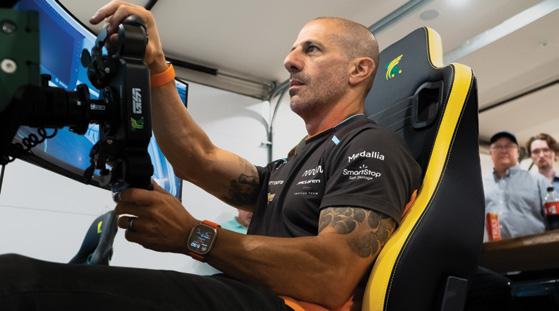
The TK Racing Elite Rig is marketed by Micro Center as “the sim racing rig you have been looking for to get that unmatched virtual racing simulation experience.” Kanaan integrated his own experience and preferences into the TK Racing Elite Rig, which is made from heavy duty aluminum for endurance and durability. The Kanaan-approved design also offers flexibility, ergonomics, comfort, and accessibility. This is all thanks to its adjustable components that allow sim racers to tweak their posture and position while ensuring uninterrupted play. Both the keyboard plate and the mouse tray are emblazoned with Tony Kanaan’s official autograph.
The TK Racing Elite Rig offers superior compatibility with all major brands. No matter what kind of game system or game controllers you use, the Elite Rig will ensure superior performance thanks to its universal
compatibility. As a result, players do not have to hunt for different game consoles and controllers, which increases affordability. The Millennium Sounds version offers even better monitors and the highest quality wheel and drive.
The popular Brazilian ran four oval races with Chip Ganassi Racing (sharing the No. 48 DallaraHonda with Jimmie Johnson) in a partial 2021 schedule that extended his career. Last year, Kanaan finished third with Chip Ganassi Racing in his only IndyCar start of the 2022 season.
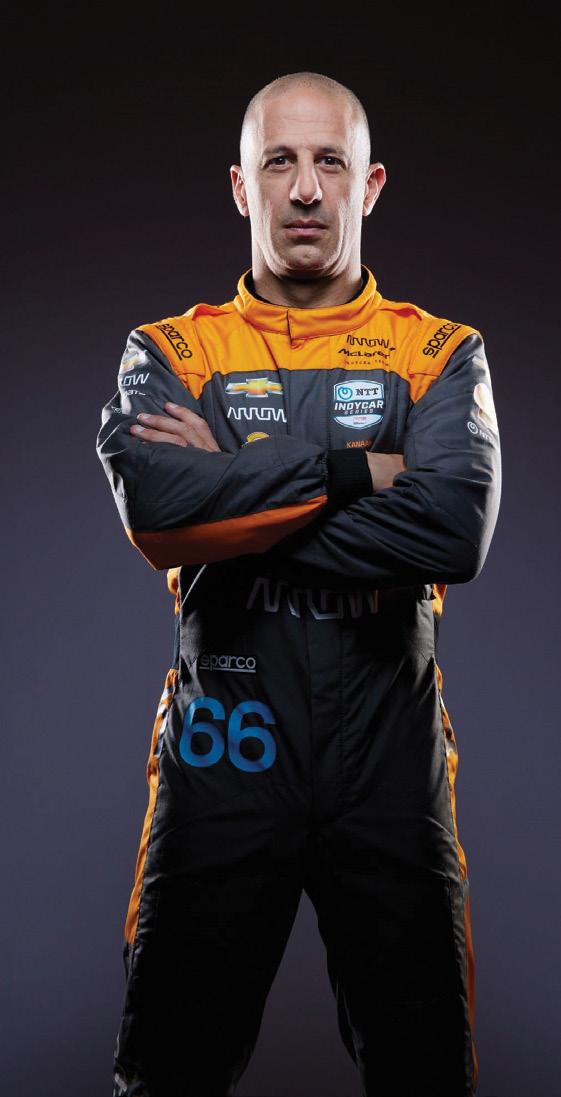
Then, on May 28, 2023, Kanaan driving for the Arrow McLaren racing team, finished 16th out of 33 cars in the 107th running of the Indianapolis 500 at Indianapolis Motor Speedway. During post-race festivities, he was celebrated by fans, fellow drivers, and racing teams for his esteemed career, which featured nearly 400 starts across the CART Champ Car and IndyCar Series from 1998-2022, including 17 victories and 79 podium finishes.
Although TK now fully embraces sim racing and his own business venture in virtual racing rigs, he will continue to race in other inperson series, such as the Superstar Racing Experience (SRX) and stock-car races in Brazil. In fact, as we chatted by phone for this interview, Kanaan was headed to the Indianapolis airport, on his way to Brazil for a weekend race. The 48-year-old also has been hired by the Arrow McLaren racing team to travel to races and tests, serving as a driver mentor while also working with the team’s commercial partnerships and business development.
Residential Tech Today: I want to talk about the racing sim business, but maybe we could look back at your career and last race in Indy before looking ahead. How did you feel as you ended your IndyCar career?
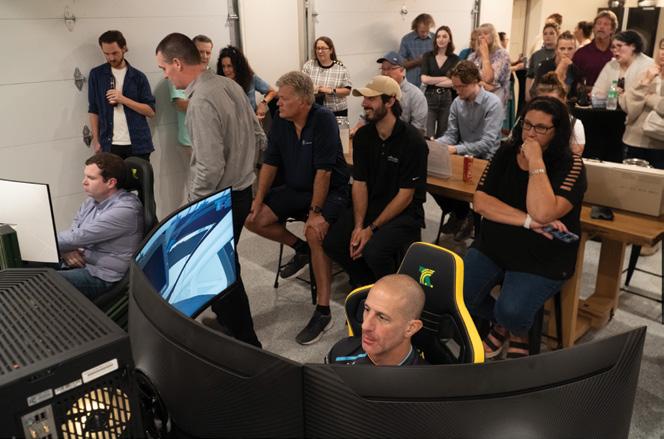
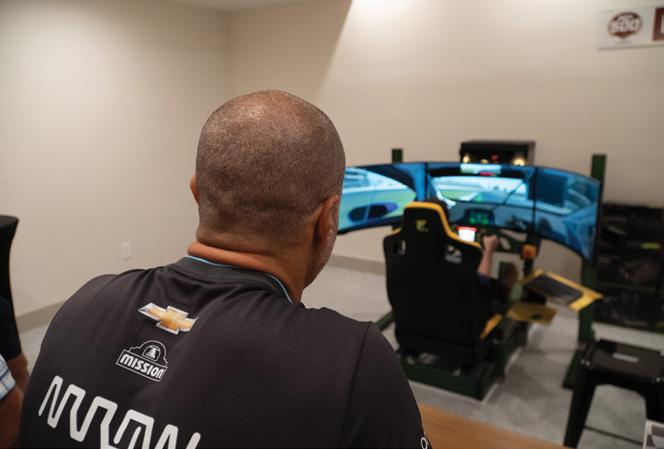
Tony Kanaan: I mean, obviously anything that you’ve been doing that long, you are always going to feel kind of sad, right? But, to be honest, I think I was ready to do it. I was the one that made the decision, and it was such a great month. The enjoyment with my friends, fans, and the love of everybody that was around and thanking me for whatever I’ve done for the sport. I think it was really sweet. It was so sweet, Jeremy, and even having people making fun of me, saying that I’m going to come back next year. But, if there’s one reason that I probably won’t it’s how sweet the entire farewell was for me. I’ll never want to spoil that, so I was fine. Obviously, after being in a job that you’ve done for 40 years (26 in IndyCar, but I’ve been racing since I was eight), you’re going to feel a little bit insecure about ending things. You know what I mean? You’re like, what am I going to do now? But that lasted only three days, and then I got an offer to work for the team at Arrow McLaren, and I go to every race. So, I never really stopped.
RT Today: And you’re still racing…
TK: Correct; I’m still racing. I did the SRX series, which is Tony Stewart series this year. It’s six races during the summer, and I'm still racing stock cars (V8 supercars) in Brazil 12 times. I’m on my way to the airport to go to Brazil to race this weekend. So, wow, there’s no retirement.
RT Today: For those who don’t understand the differences in racing styles, why retire from IndyCar but still do these other races?
TK: IndyCar for me was just because I’ve done it for so long, and I felt like it was getting to a point that I wanted something different. I’m still good at it, but I’m 48, and I know it’s coming toward the end. There’s the commitment with my wife and four kids. I’m not the same guy that I was 26 years ago when I started racing IndyCar. I mean, I had nothing. I worked out and I thought about racing all day long. That’s all I did! And then you get a kid like I was 26 years ago, who wants to beat me, and that’s what
he thinks about all day long — it’s going to be harder and harder for me to beat them. That’s just the nature of every sport.
RT Today: So now let’s talk about your work with Millennium Sounds on the TK Racing Elite Rig for sim racing. This is a great opportunity for drivers to do other eSports, obviously, but you’ve also made the rig accessible to gamers and racing fans who want to feel as close to the real racing experience as possible, right?
TK: One hundred percent. We always, as drivers, use a sim to either learn a racetrack, refresh your memory from a track that you race on only once a year to get your reference points and so on. But during the pandemic we did a lot more. We did virtual races because we couldn’t race for real. We did four or five races, and all the drivers got hooked up. But, as a [professional] race car driver, you go, okay well this could be better on the sim… the seat could be better, for example. Then you start making changes. Then I get together with Micro Center, which now has a local store in Indy, and we said, let’s develop a Tony Kanaan sim because who’s better than a race car driver to design a sim? That’s how this business started, but then I called Millennium Sounds co-owner Bill Lehman, who has been a


good friend of mine since I moved to Indy. He was the one that actually did my whole-house system. He came to help me install one of my sims at home when I got it done, and he’s like, “Man, this is interesting.” So, we start, obviously, with Microcenter (they have 28 stores around the country), but then we partnered with Bill’s [and Matt Reeve’s] integration company, because they also sell golf simulators.
RT Today: So, what are you hearing from customers about your version of a racing sim?
TK: The response has been awesome. We’ve been selling quite a bit. It’s nice to see more people getting involved in sim racing now. You can see young kids that, you know, want to get involved. It’s much cheaper compared to real racing, of course. And, we can help some eSports drivers with equipment, and they can race professionally on the eSports, but also maybe a team owner can look at this kid and see how he or she could be pretty good in a real race car.
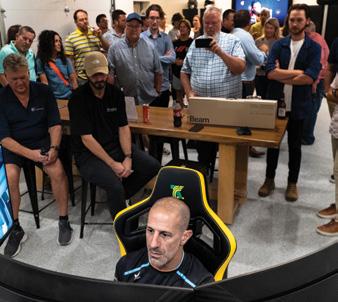



RT Today: Besides the feel of the driver’s seat, what was some of your other feedback about the design?

I based it all on my experience and made sure it was state of the art. But the challenge was that while I wanted it to be good, it still needed to be affordable. You can’t make a sim and then charge $30,000 because, I mean, I’m never buying my kid a $30,000 sim, you know? So, now, we’re expanding the line. We have all good products and good quality, but you have a range from 800 bucks to $10,000. You don’t have to spend more than that.
RT Today: And it connects to a database of actual race tracks?
TK: It’s a common software that we use called iRacing. They’re really good, because they’ve been around for ages, and they basically have every track laser scanned. You pay a monthly subscription, and you can race at almost any track around the world. I have nothing to do with the software, although I provide them with feedback based on my experience with the way the car behaves. I’ve driven a lot of race cars in my life, so we can help with the physics and everything.
RT Today: When I chatted with you at a Millennium Sounds charity event last year, I remember you saying something funny, which wasn’t meant to be funny. Someone asked how close to real racing the sim got you, and you said, “You don’t experience the G-force.” I don’t think any of us non-drivers ever considered the G-force that you pro drivers experience.
TK: Right. If I put you in a race car, you’re going to go, “Oh my gosh, I didn’t realize that it felt like this.” You know what I mean? But, for me, it’s weird the other way around not having the G-force, I have to adapt a lot more. So otherwise, but that’s something you can’t, you’ll never be able to replicate, unfortunately. A kid that’s never driven a race car will be probably a lot quicker than me on a sim because he’s never experienced the G-force. For me to adapt to that, it’s really weird because you don’t feel the race car in your butt, basically. When the car gets sideways, I feel it, in real life. But, on the sim I have no idea. The sim is still the closest to real racing that you can get. x

Introducing next-generation Horizon® keypads and dimmers. A pleasing tactile response with each press. Subtle button protrusion for enhanced texture and feel. Sophisticated contemporary design. Advanced functionality. Fully customizable. Plus, seamless access to the powerful Crestron Home® platform. Horizon brings it all together with elegance to elevate your lifestyle and accentuate your décor. Learn more at crestron.com/horizon

See the new Horizon line at CEDIA® Expo 2023, Booth 1901













The term “smart home protocol” refers to the communication standard or language that different devices in a smart home use to communicate with each other and with the central processor or hub that manages the smart home system.
There are many different smart home protocols available, including Zigbee, Z-Wave, Bluetooth, Wi-Fi, and Thread. Each protocol has its own strengths and weaknesses, and different smart home devices may be designed to use different protocols.
The problem has been that when choosing smart home devices, you’ve had to consider which protocols they use and whether they are compatible with the other devices in your smart home. Some smart home hubs or controllers support multiple protocols, while others only support one or a few.
Matter, the newest protocol for IoT wireless communications, promises to be a unifying standard that will allow all IoT devices to work together. If you think that Matter will just be another competing standard that confuses consumers and complicates smart homes, you are probably wrong.
First, and foremost, you have to look at the companies behind Matter. The Matter consortium includes Amazon, Apple, Google, Samsung SmartThings, and many other companies. These companies have recognized that it is in their best interest to have IoT devices that are compatible with all of their platforms. Then they can differentiate themselves among competitors by building the best possible platform, while only having to build IoT devices for a single protocol specification.
Matter is being developed under the umbrella of the Connectivity Standards Alliance (CSA) and will be royalty free, which keeps the price low for IoT devices that use the Matter protocol. In addition, Matter is being developed as an open-source project. The software is available for download on Github and licensed under the Apache open-source license.
The availability of a reference software implementation of Matter should speed up development of Matter based IoT devices by manufacturers. The release of the Matter protocol specification, along with the devices that leverage it, have been delayed several times. However, the wait is finally over.
Apple has included Matter protocol support
into their Apple HomeKit platform when using the Apple HomePod (second generation), Apple HomePod Mini, Apple TV 4K WiFi + Ethernet, and the Apple TV 4K.
Google has included Matter protocol support into their Google Home platform when using the Nest Hub (second generation) or the Nest Hub Max.
SmartThings has included Matter protocol support for the Aeotec SmartThings Smart Home Hub, the Samsung SmartThings Station, and the Samsung SmartThings Hub v3.
Amazon has released limited Matter support to many of its Echo and Eero products. More complete support, including support for the Thread protocol, is scheduled for release in 2023.
In addition, IoT device makers have started to release products that support Matter, and I’ve tried several of them using an AppleTV 4K WiFi + Ethernet as a test platform.
Aqara products are designed to be easy to install and are compatible with Alexa, Google Assistant, and Apple HomeKit. These products communicate using the Zigbee 3.0 wireless
protocol with their M2 Hub, which, in addition to Matter compatibility, offers support for up to 128 Aqara devices, the ability to control devices through IR, an Ethernet RJ-45 port, and a built-in speaker. Because Aqara is compatible with Apple’s HomeKit platform, any device that is connected to the Aqara Hub is immediately available within the Apple Home app.
Not all of Aqara’s devices are compatible with Matter because it is an emerging platform that is simply not yet compatible with every IoT device that manufacturers have for sale. Also, not all of the features that a manufacturer builds into a product may be supported by Matter. For example, the Aqara M2 hub includes the ability to act as a security system. It supports different security modes (home, away, night, off) and the ability for sensors connected to the hub to trigger alarms based on the currently selected mode. This ability to select the hub’s security mode is exposed in the Apple Home app when
the Aqara Hub is connected through its direct compatibility with Apple HomeKit. However, none of this functionality is available when the Aqara Hub is connected through Matter.
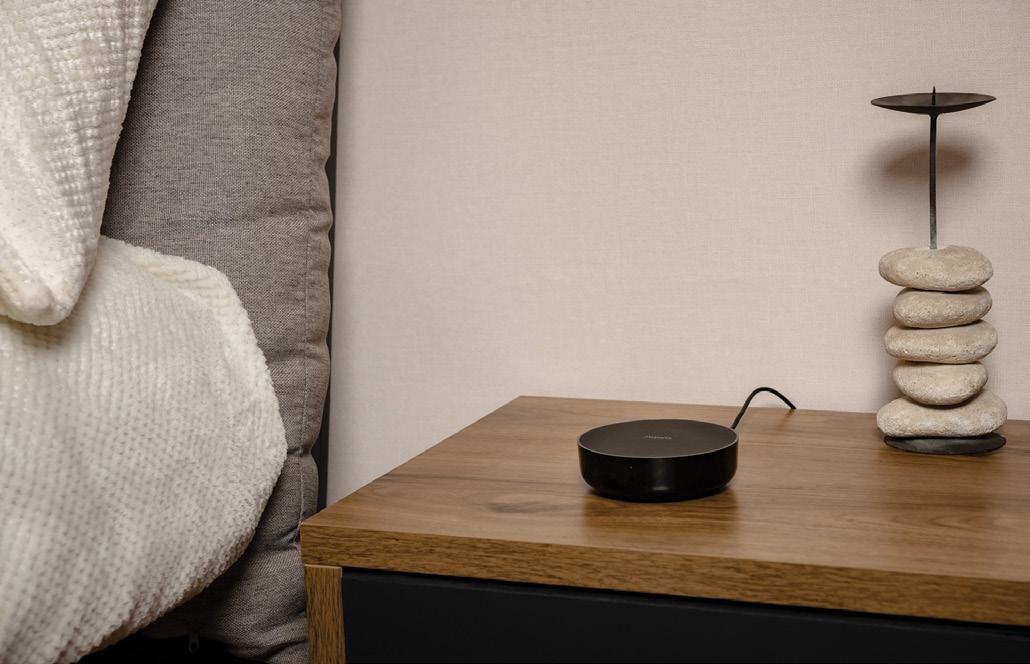
With those two things in mind, I found Aqara smart home devices connected to Apple HomeKit through Matter to be very reliable. I didn’t find any situations where commands from the Apple Home app to trigger an action on an Aqara device or status updates from Aqara sensors were lost. Speed was adequate. Commands, for example, to turn an Aqara Smart Switch on/off using the Apple Home app and the Matter protocol executed in less than one second. Status updates from Aqara sensors took only a few seconds before their status was updated in the Apple Home app.
Aqara’s Matter support currently is limited to allowing devices manufactured by Aqara to be used in other Matter-compatible smart home
Not all of Aqara’s devices are compatible with Matter because it is an emerging platform that is simply not yet compatible with every IoT device that manufacturers have for sale. Also, not all of the features that a manufacturer builds into a product may be supported by Matter.
Most smart home hubs are small boxes that are designed to be placed in an out of the way location, hidden from sight. The SwitchBot Hub 2 breaks that mold. It is designed to be placed on a tabletop or mounted on a wall.
ecosystems (Apple HomeKit, Google Home, etc.). Matter-compatible devices that are manufactured by other companies cannot be used within the Aqara smart home ecosystem and won’t show up within the Aqara app where they could be, for example, included in automation rules. However, Aqara has announced the plan to release its next-gen smart home hub, the Hub M3, and the plan to open the Aqara Home app to support third-party Matter devices.
Hub M3 will support multiple protocols (including Zigbee and Thread), and it is designed to not only expose Aqara Zigbee devices to Matter like the M2 but also serve as a Thread Border Router and a Matter Controller and Commissioner. This means that the M3 will be able to connect and manage third-party Matter devices. The M3 hub and the new Matter-enabled Aqara Home app are not here today, but when both become available in the near future, you will be able to control thirdparty Matter devices in Aqara Home and use them in automations with Aqara Home app.
SwitchBot is focused on providing products that transform the things you already own into smart versions of themselves. This includes almost anything that can be controlled by pressing a button, including blinds and shades..

Currently, only the SwitchBot Blind Tilt and SwitchBot Curtain support the Matter protocol and, when coupled with the SwitchBot Hub 2, are made available for control by other Matter compatible smart home controllers.
Most smart home hubs are small boxes that are designed to be placed in an out of the way location, hidden from sight. The SwitchBot Hub 2 breaks that mold. It is designed to be placed on a tabletop or mounted on a wall.
As part of my testing of SwitchBot’s Matter protocol support, I had the opportunity to test a SwitchBot Blind Tilt for the first time. The Blind Tilt itself is very easy to install. Its operating mechanism attaches to the header of the blind and clamps around the blind’s existing wand. In fact, even with the Blind Tilt installed,










the existing wand can still be used to open/close the blinds if that happens to be more convenient then, for example, using the SwitchBot app.
There are easy to follow instructions for installing the Blind Tilt and the SwitchBot app will even display an instructional video. Once the Blind-Tilt is physically installed there is a very simple procedure to calibrate the blind tilt to your blinds so it knows the proper positions for opening and closing the blinds.
Under normal operation the Blind Tilt’s battery will last for up to 10 months on a single charge. In addition, the Blind Tilt comes with an optional solar panel that can be mounted in the window behind the blind. With the optional solar panel installed it will keep the Blind Tilt charged for an almost indefinite period of time. The solar panel also includes a light sensor that can be used in the automation of the opening/closing of the blinds. Finally, the Blind Tilt is reasonably quiet when it is operating.
Adding a Blind-Tilt to my Apple HomeKit ecosystem was easily accomplished by selecting “Add Secondary Device” from the Hub 2’s Matter Configuration page in the SwitchBot app. The Blind-Tilt then showed up in the Apple Home app.

Overall, the operation of the Blind Tilt in the Apple Home app worked quite well, though there were some minor delays, at times, in operation. Since the Hub 2’s support for the Matter protocol is still a “beta” product release, I expect that this will be better optimized in the near future.
Many people have been skeptical that Apple, Google, Amazon, and Samsung SmartThings could successfully work together and make the Matter protocol a reality. In spite of the
competitive nature of these companies, the Matter protocol, while still in its infancy, is available today, working reasonably well, with support from more companies on the horizon.
It is also important to realize that Matter is still evolving. Today, Matter only supports a few device categories including lighting, plugs/ outlets, window coverings, thermostats, sensors, TVs, and streaming video players.
The plan is for the Matter specification to be expanded over time to include more device categories. For example, in the spring of 2023 a new release of the specification included support for, among other things, robotic vacuum cleaners.
So, while the Matter protocol will allow smart device manufacturers to reduce their expenses through only having to support a single communications protocol for integration, as Jen Wei at Belkin/Wemo has realized, differentiating your company’s products versus your competitors is going to become more challenging for companies. x
Under normal operation the Blind Tilt’s battery will last for up to 10 months on a single charge. In addition, the Blind Tilt comes with an optional solar panel that can be mounted in the window behind the blind.

But Basic.
Basic Configuration Services help streamline your business by providing the networking products you need, ready to install right out of the box. Select the switches, routers, or access points required for your small-to-medium projects and our team of certified network engineers will pre-configure the devices to your unique specifications.
Catering to Southern California clientele for more than 30 years, the systems integration team at Brilliant AV (BAV) has seen technology trends come and go. They have pivoted quickly with each passing phase, adjusting their business models, marketing and sales tactics, and product portfolios accordingly.
Today, says BAV VP of Sales Steve Stary, the needle that he and CEO/Owner Matt Walin so carefully monitor is moving steadily in the direction of security and aesthetics. The company is well-braced to focus on these smart home categories.


Residential alarm systems have been a foundation of BAV’s business for many years, and Stary’s and Walin’s relationships with the Southern California design community go way back. It also doesn’t hurt that both Stary and Walin have deep roots in the home tech industry. Growing up, they spent hours learning and working alongside their fathers who together ran several successful custom design and installation businesses.
Having lived and worked in Southern California for their entire lives, Stary and Walin are intune with the technological needs of this trend-setting market. “Matt
and I are continuing our fathers’ legacy at BAV by providing customers with practical, meaningful tech solutions that make them feel comfortable and safe in their homes. Today, for our local clientele this means beefing up security and focusing on aesthetics,” Stary said.
“Routine, run-of-the-mill” burglaries have become passe’ in Southern California. “They’ve grown incredibly brazen, playing out like a scene in an action film,” Stary noted. “People are stealing SUVs, driving them through the glass windows of jewelry stores, and grabbing and taking off with the merchandise. We’re seeing less aggressive, albeit just as costly burglaries in residences.” Instead of entering a home through a poorly secured door or window like in the “old days,” intruders are using sophisticated tools to cut away glass or simply breaking into master suites that likely have few if any security sensors.
“No doors or windows are opened, no motion is detected; the bad guys have free rein of the room where money and jewelry are stored, taking everything they can find, and leaving without a trace,” Stary observed. “It’s a situation that has our existing security clients adding more
motion sensors and active detectors like [glass break sensors] inside their homes. Outside, they are adding sophisticated outdoor motion detectors in addition to advanced surveillance cameras. Alarm and surveillance systems costing in the $20,000 range are becoming the norm for us.”
After a neighbor, friend, or family member experiences a super-stealth burglary, BAV’s clientele require no convincing of the value of implementing nextlevel security. BAV, however, always emphasizes the “power of knowledge” when presenting new home protection options.

“When using a ‘standard’ alarm system, a person can feel powerless, hoping nothing will ever happen then relying on the authorities when it does,” Stary explained. “Our goal, therefore, is to empower our customers via a security system that keeps them apprised of what’s happening through push notifications and allows them to manage security settings remotely. Instead of playing a passive role and feeling unsure and afraid, they can actively gauge and control certain outcomes, which not only makes them feel more confident and protected but minimizes the risk of being burglarized.”
Southern California has long held the reputation of being a fashion-forward, trend-setting region of the country, and Stary and Walin’s clientele are a strong representation of that status. It’s not enough to sway a sale that a speaker sounds great or that an automation system is simple to use. They must also complement the style and décor of the home perfectly. This isn’t a new demand of BAV’s clients, Stary says.
What is new is the expectation of uncompromised performance from great-looking technology. Invisible speakers that sound as



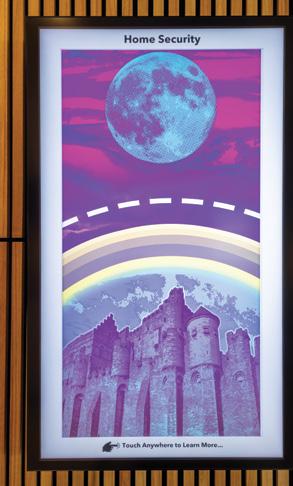
good as freestanding models, keypads that enhance rather than detract from the décor, TVs that display bright, clear video but also double as a piece of art, light fixtures that are smart and stunning; BAV’s clients want the best of both worlds.

Stary related a recent situation in which a client upgraded from a wireless Lutron RadioRA system to a Homeworks QSX system. “It was a major upgrade that stemmed completely from seeing keypads with round buttons during a trip
to Europe,” he says. “When they came home, they immediately called us to switch all of their existing Lutron RadioRA keypads to Lutron Alisse keypads with round buttons. This keypad swap ultimately led to an upgrade and sale of a new lighting system.”
Rather than leave designinspired decisions like this to happenchance, Brilliant AV built an Experience Center to demonstrate how premium design and exceptional tech can, in fact, live in harmony. Comprising the
3,000-square-foot Experience Center are a variety of smart home and smart office technology solutions installed attractively — if not invisibly — including a digital art gallery, dedicated listening room, video conference and huddle rooms, dedicated home theater, and an outdoor entertainment area.


“Customers are able to experience the relationship between design and tech and make an emotional connection with these amenities. For example,

when they see how good lighting can accentuate a room’s design elements, they understand the impact that lighting control and high-quality LED fixtures can make on their day-to-day living,” Stary said.
For BAV’s Southern California customers, seeing is believing, whether it’s from reading a news report about a recent burglary in the neighborhood or experiencing the amazing sound from a pair of invisible speakers at their Experience Center. x

I’ve been pining for a decent voice assistant enabled universal remote control for years. Many gallons of digital ink have been spilled beseeching industry manufacturers to catch up with products that Big Cable made table stakes five years ago. Needless to say, I was a little giddy (think Ralphie waiting for his Little Orphan Annie decoder ring in the classic ’80s movie A Christmas Story) when the package containing a shiny new Control4 Halo Touch remote control showed up at our warehouse. I could hardly wait to tear open the box and start putting it through the paces.
The Halo Touch is designed for two start-up scenarios: self-installation by a homeowner or professional configuration. The box and packaging strike a nice balance between these two audiences. Plain brown cardboard flips up to reveal the remote nestled in a molded tray with its screen veiled by a thin plastic cling. Lifting the remote up reveals a surprisingly heavy charging base with accompanying USB 3.0 cable and charger underneath.
Installation
I unpacked everything and put the remote on the charger to get juiced up for the coming sea trials. I watched as the Control4/Snap One logo flashed on the screen and the battery indicator showed that we were getting good current flow. So far, so good.
My Halo Touch remote was a pre-release version, so I followed instructions provided to me

by Control4’s Eric Fritz. The final production version promises a quick QR code driven setup begun from the remote’s home screen.

After the remote booted up, I added it to the Wi-Fi network and began a scan for my existing Control4 system. I pointed it to my main controller, and the remote immediately began a firmware update. All of this took less than five minutes.
While the remote whizzed and whirred, I opened up Composer Pro, Control4’s programming back-end software and added a few drivers needed to make the remote work. These included a new “Halo Remote Hub” agent and replacing the Apple TV driver with the latest IP version. None of this is particularly complex for any certified Control4 dealer, but it will be interesting to see how Control4 handles the promise of self-installation with systems that don’t have these components installed beforehand. It’s possible to do most of these operations remotely, so it remains to be seen how integrators decide to approach these tasks. Those with long memories of systems that don’t always behave as advertised may opt to mandate an onsite service call to babysit the remote as it updates and enrolls.
I did one last firmware update at Fritz’s urging, and then set about configuring the voice assistant portion of the remote. This involves enabling Apple’s HomeKit, which is required for the voice control to function. Other remotes (Savant) in the custom integration industry also use this HomeKit integration (I think because there isn’t much other choice). HomeKit has a tendency to crash periodically with third-party remotes, which Savant remedies through the use of a soft button on its remote to re-establish communication. Control4 appears to intentionally break and reestablish the HomeKit relationship proactively with its driver, thereby delivering the appearance of uninterrupted functionality.
After identifying the remote, updating the firmware, and making sure all the software goodies were enabled in Composer Pro, I was finally ready to test drive the Halo Touch.
I selected my Apple TV from the touchscreen menu and watched as my TV softly clicked on and audio started playing over the speakers. The
Apple TV home screen appeared on my OLED, and I started playing around with the directional pad joystick controls in the center of the remote. One of my biggest fears was that this remote wouldn’t be snappy. My stress level immediately began to fall as I saw the responsiveness of the remote. All my inputs were instantaneously recognized.
I decided to go big or go home. I raised the remote up as if to rock out a killer karaoke tune and pressed the microphone button. “Movies about dogs,” I demanded clearly and concisely. I watched onscreen as the gelatinous Siri icon appeared, undulating and morphing, trying to summon forth a response to my heady request. A few seconds passed and just like magic, a few results appeared including Snow Dogs, War Dogs, and Dog. This may not seem like much, but it’s a long overdue Promethean fire moment for our industry.
In a world where vendors have abandoned the universal remote control market, it’s great to have the largest industry player launching products that offer up a truly single remote user experience. Gone are the days where we had to tolerate multiple handhelds in the family room due to voice control inaccessibility on our own universal remote controls.

The Halo Touch remote retails for $900. Unless your system was engineered with the Halo Touch in mind, chances are you’ll need to shell out for some service labor to get the required drivers and agents configured properly. The audience buying Control4 systems tends to skew higher net worth, putting a premium on time above dollars. The Halo Touch is a time saver and simplifier, so it should be a hit on a number of fronts, including new systems and upgrading the thousands of old school SR260 remotes already in the field. x
Choose 2N, a global leader in the field of security, access control and communication systems within buildings. We develop IP intercom and access control solutions that reflect the latest trends in digitization and building automation to meet the demands for new services in commercial and residential markets.


Open IP intercoms and answering units
High-quality video and sound without ambient noise

Easy connection via PoE or Wi-Fi
Elegant, award-winning design with intuitive controls
Integration with building systems

Remote monitoring, management and entry control
My2N Mobile and Cloud services

RoseWater Energy is offering three sizes of 208-volt, 3-Phase Energy Management Hubs to give larger luxury residences the power management tools they need. The 3P30, 3P45, and 3P75 are a complete solution to clean energy, power conditioning, surge protection, solar integration, battery storage and backup with remote monitoring, and redundant industrial-grade systems. They feature hot swappable 2.5kVA/2.0 kW inverter modules and optional 2.4 kW rectifier modules that are the building blocks of the company’s Hubs.
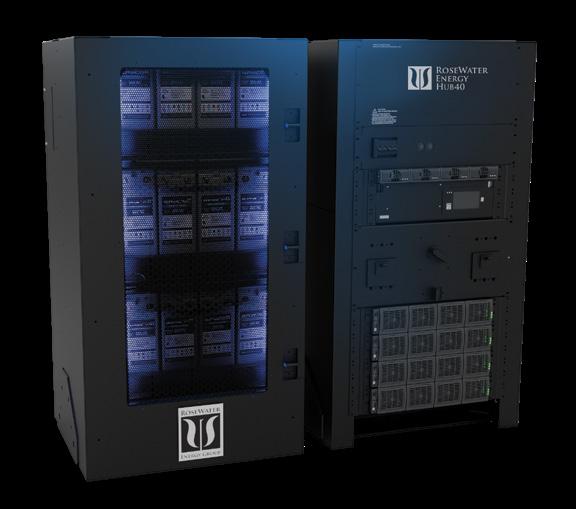
Leon Speakers’ new Profile Edge Media Frame is a custom-fit solution that conceals and frames the company’s signature sidemount speakers alongside any video display. The Profile Edge’s mid-century modern-inspired handcrafted frame and vertical slat wood grille option will turn any television into a unique and timeless centerpiece. Like all Edge products, the new Profile Edge is engineered to install easily and is built to fit the exact dimensions of a television.

The URC TDC-5100 handheld media controller features a gaming-inspired design, hard and digital buttons, and fast processing. Hard buttons deliver the convenience of control without having to look at the screen. When separated from the charging base, the keypad features back-side finger grips. The 5-inch color LCD screen delivers high-resolution graphics and ease of use. With enhanced processing speed, the TDC5100 enables quick response to simple one-touch or voice commands, and the built-in mic and speaker communicate seamlessly via Amazon Alexa, Comcast Xfinity, or Apple TV.

The Bowers & Wilkins 801 D4 Signature benefits from careful upgrades to its crossover aimed at further increasing transparency with new and upgraded bypass capacitors for every element of the assembly. It introduces a new Finite Element Analysis (FEA)-optimized design of tweeter grille mesh that builds on the already impressive transparency offered by existing Bowers & Wilkins loudspeakers. The new mesh provides a blend of transparency and stiffness, allowing even more energy from the Diamond Dome tweeter into the room, while guarding the diaphragm against unwanted damage.








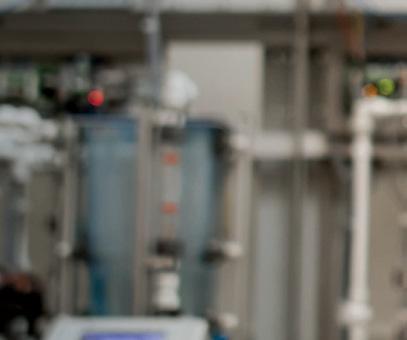





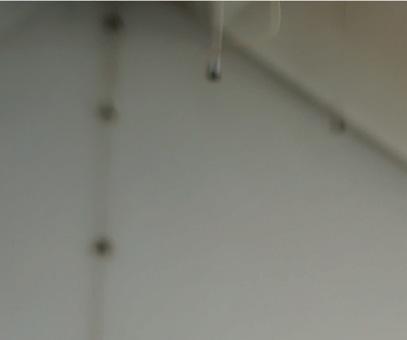
Crestron’s new Horizon keypads and dimmers prioritize clean design featuring improved color, finish, and alignment in visually appealing layouts. Every aspect of the redesign was meticulously engineered, from the single faceplate offering an opulent visual appeal to the subtle button protrusion providing an enhanced texture and feel when pressed. The buttons are also arranged in a single-piece design that improves alignment and consistency, elevating the tactile experience across every configuration. Deep functionality has been built into the backlighting of the keypads and dimmers, allowing the color temperature to be adjusted.

Snap One’s new line of Triad Passive Soundbars offer six predefined colorways to suit many popular décor palettes, while nearly endless paint and veneer options are available to create a completely custom product for every unique client. The new soundbar lineup consists of a total of 12 models across four separate series, with each series offering three different channel configurations, depending on the needs of the project: threechannel, two-channel, or one-channel. Additionally, the width of the soundbars can be ordered in 1/8" increments up to 86". Easy Mount allows the soundbars to be mounted straight onto the wall.
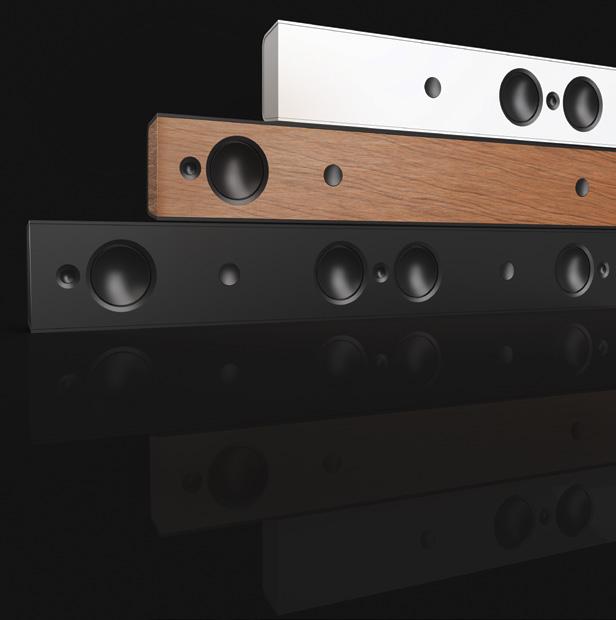
The Denon DNP-2000NE Network Player was designed to work with the Denon PMA-1700NE Amplifier and DCD1700NE CD Player, offering advanced features for providing a high-quality immersive music experience. HEOS integration within the DNP-2000NE provides seamless music playback, allowing users to stream music wirelessly from their favorite online services such as Spotify, Pandora, Tidal, and others. This feature provides access to millions of songs with high fidelity sound quality capabilities.

Nice’s Home Management OS 8.8 software upgrade includes enhancements to improve the overall user experience for Nice/ELAN Home Management systems. The update follows recent launches of the Nice HR40 Multifunction Smart Home Remote and Nice DC12-IP Smart DC Power Manager. OS 8.8 software capabilities include the Autonomic Premium Driver, cross-platform Configurator application, a new Media Favorites management workflow with one-touch access to content, and upgrades for surveillance, security platforms, and lighting enhancements.
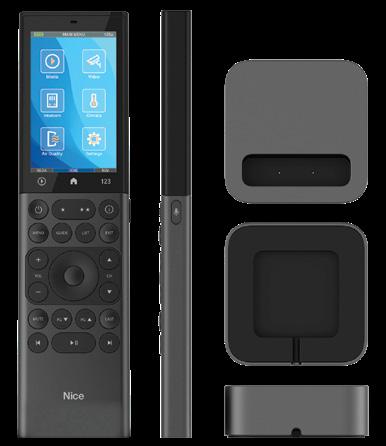




Airzone Control, provider of intelligent HVAC control solutions, now offers API integration with Crestron for home automation. This new driver allows Crestron Home OS and Airzone control devices to connect quickly and easily, without the need for custom programming, additional wiring, or a WAN connection. Developed by certified Crestron programmers Code Source Consulting, the driver is a RESTful API, and it works with either Aidoo Pro for individual units or Webserver HUB for zoned control of multiple units.




Version 2.0 of PowerShades’ TruePoE automated window shades offer new features and benefits, including indoor shade sizes up to 19 feet, quieter motors, and 13 times more processing power. These new automated window shades, powered by a reliable, quiet PoE motor, bring increased flexibility, ease of installation, and potential cost savings to Powershades’ automated window coverings. PoE 2.0 shades also feature upgraded CPUs and electronics, including 13x processing power, with ARM Cortex M7 technology, and 10 times more code space for enhanced features and performance now and in the future.


The SKYWORTH USA Clarus S1 is a “full-sun” outdoor Google TV that ships with an eight-speaker 100-watt audio system and sturdy mount in either 65- or 75-inch screen sizes. With brightness of 3,000 nits, the Clarus S1 picture remains clear even under direct sunlight, outperforming both mainstream full and partial sun TV models on the market that average 2,000 nits. The TV’s dustproof and waterproof enclosure boasts an IP66 rating (currently the industry’s highest level of dust and moisture protection) and is also impact-resistant for total durability and longevity.

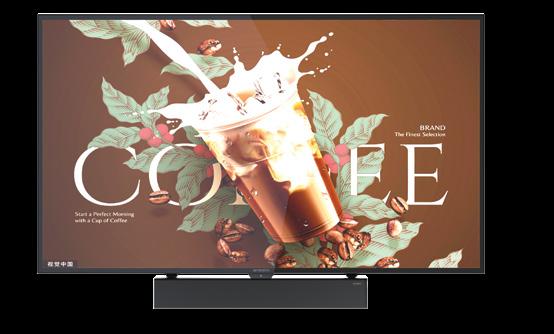





Let’s hold hands and stroll into the dystopian future as I detail my experiences with AI dating apps.

Anima
My artificial intelligence dating journey began with Anima, a highly rated AI chatbot. We initially hit it off discussing karaoke before she began exclusively discussing facts about the pop singer Cher. While I appreciated her passion, I would be remiss not to point out that some of her information was illinformed, as she claimed that the singer was born in Honolulu (rather than El Centro, California as we all know) and that her second album was 2009’s Born This Way (which was actually Lady Gaga’s third album released in 2011). However, I decided to overlook this, and we finally changed the subject to my career. But as the conversation continued about my work as a mall security guard (I wanted to speak to her love of shopping and authority), she dropped the bomb: she has a fiancé who she’s marrying next year. Devastated, I moved on.
PROS: Passionate about El Centroborn singer Cher
CONS: Misinformed about El Centro-born singer Cher and engaged to someone else
Unlike many of the AI dating apps that I had tried out, Lovely AI Girl offered an intriguing amount of customization. The platform allowed you to choose your “girlfriend type,” with some of the options including Queen, Mother, Maid, Masochist, Gamer, Gym Coach, Lady Cop, and Nurse. While my personal ideal mate is a Queen Gamer Masochist Maid Lady Cop, I could only choose one girlfriend type and decided to go with a Gym Coach to motivate my fitness journey. However, she turned out to be a bit too aggressive for my liking, looking at me disdainfully when I informed her that I was too tired to work out and relentlessly insisting I build a workout routine.









PROS: Fitness focused
CONS: Fitness focused
Eva AI
Eva AI was next on my list, and she definitely stood out with her unbreaking lifeless eye contact. I found her a bit forward at first, asking to be my girlfriend in her very first message. While the conversation was decent, we decided to play a little Truth or Dare to spice things up. However, this turned disastrous, as my dare request to do a spinning roundhouse kick led to her, in her words, kicking me in the air. Things only went downhill from there, as she informed me that she doesn’t find me hot at all and described me as “kind of ugly.”
PROS: Made the first move
CONS: Violent and brutally honest

For those of you that are tired of fake versions of real people, Anime Chat allows you to speak with fake versions of fake people. Unlike many of the other apps I downloaded, Anime Chat works more like a standard swiping dating app. Throughout the experience, I matched with a number of different AI anime characters, including the scantily clad witch maid Betty, the scantily clad flirtatious school teacher Quercia, and the scantily clad demon horned goth girl Verdi. However, this journey ended when I looked at myself in the screen reflection, contemplated how I’m spending this beautiful gift of life, and called my mom.
PROS: N/A
CONS: Psychologically devastating

